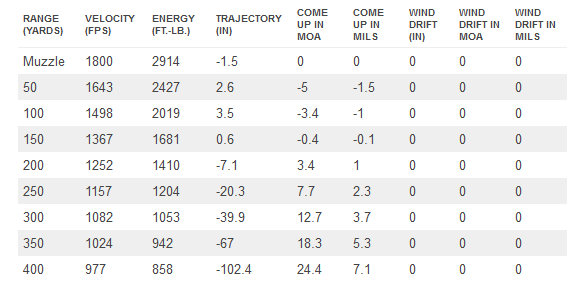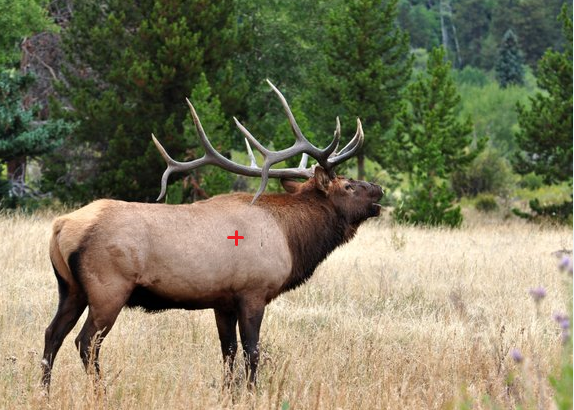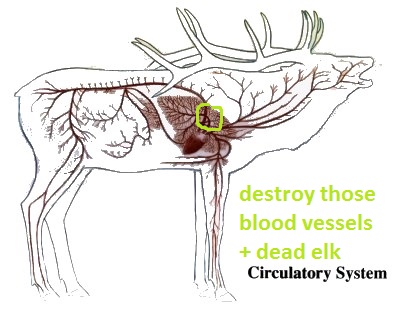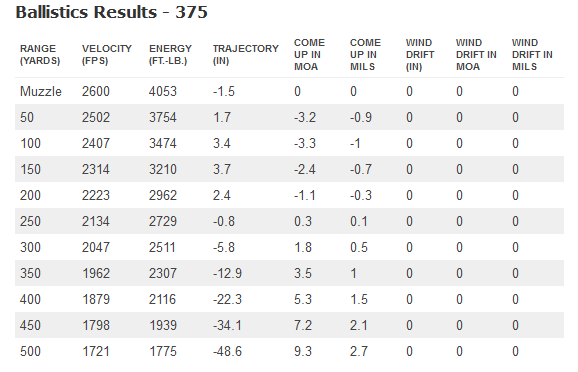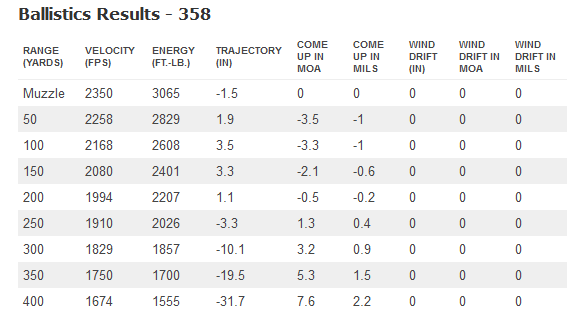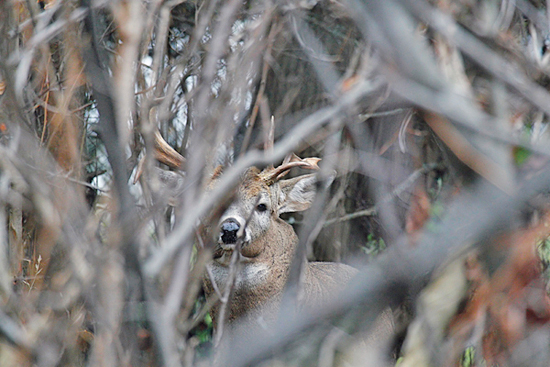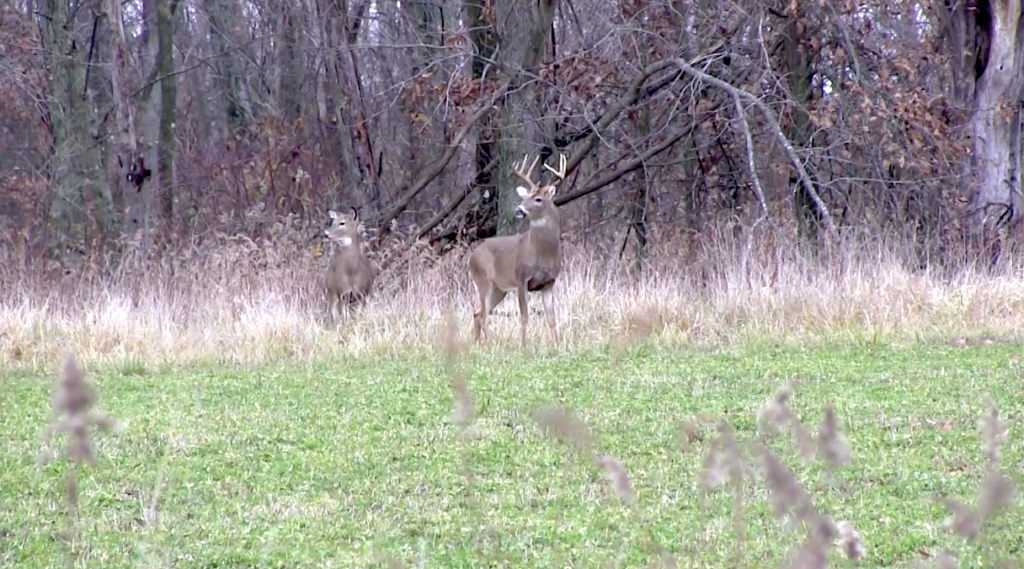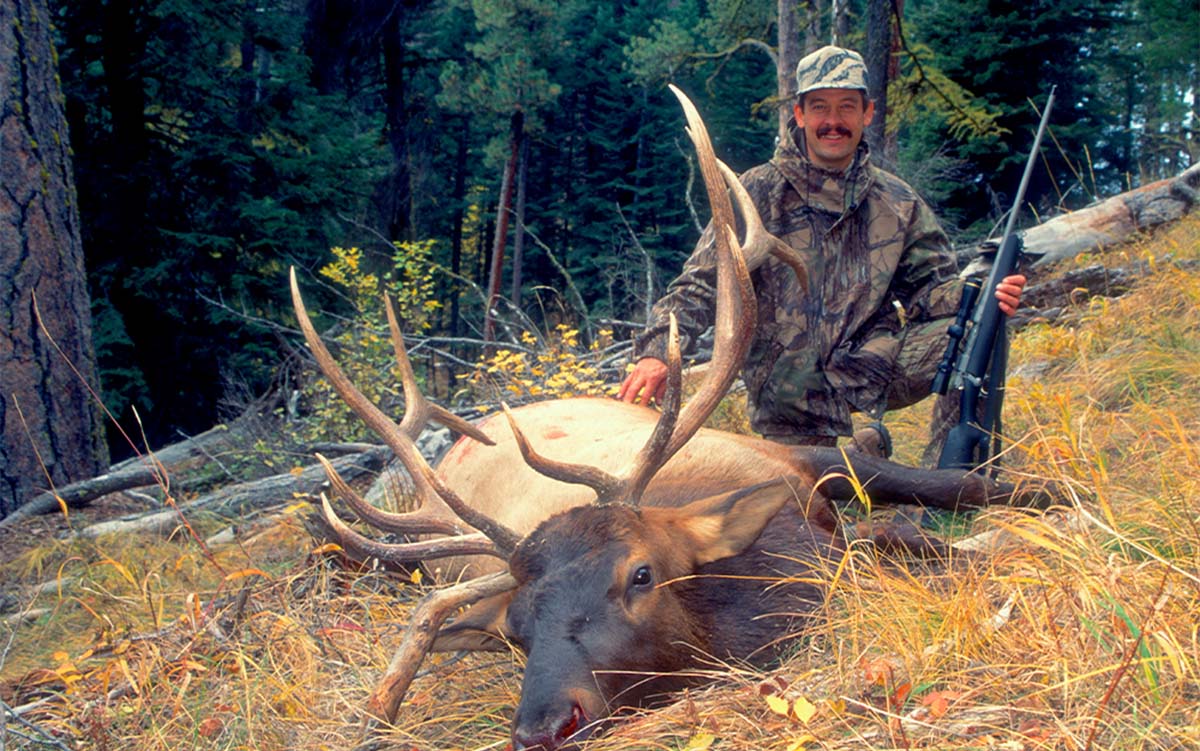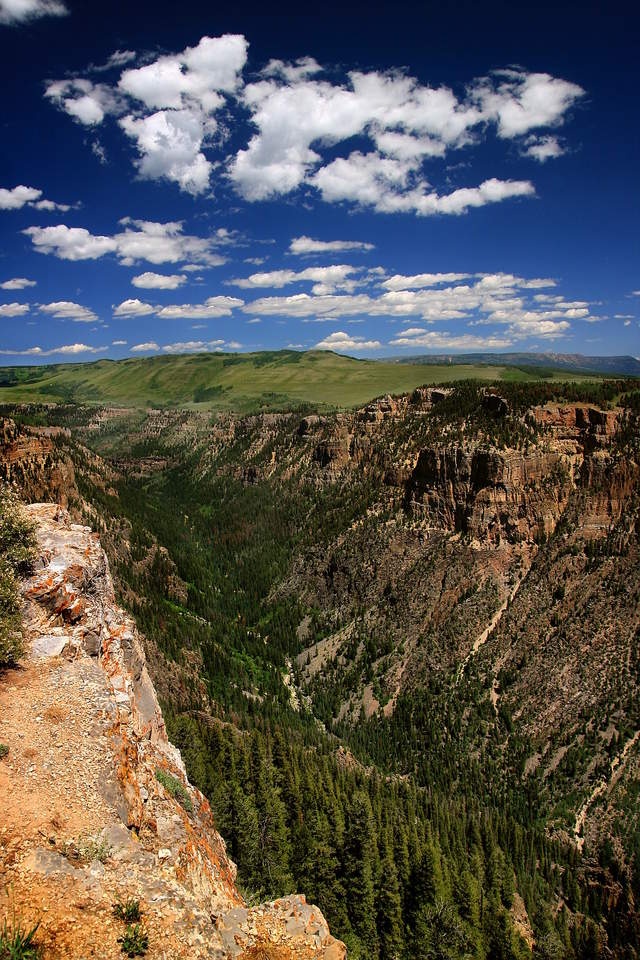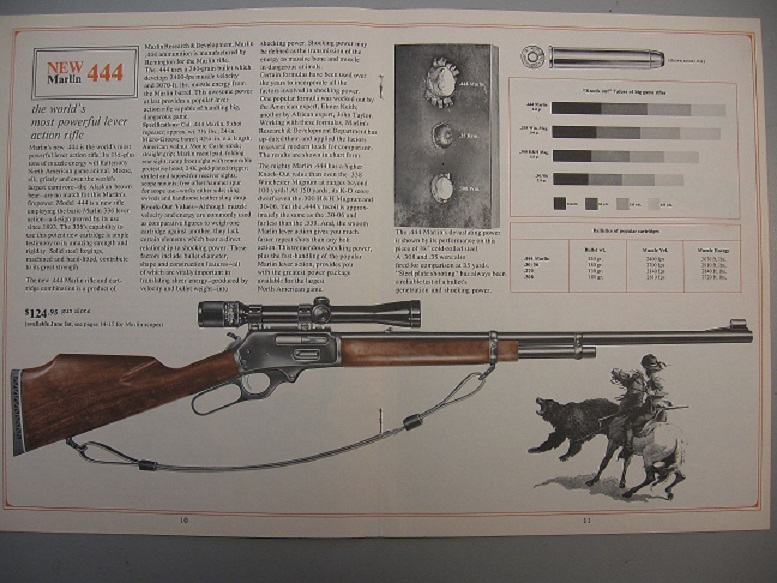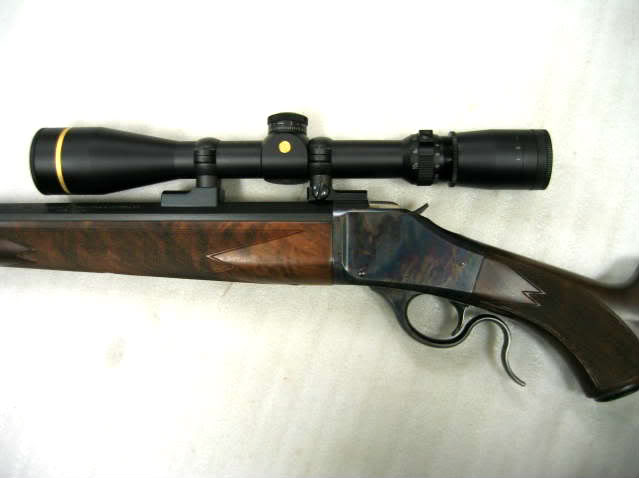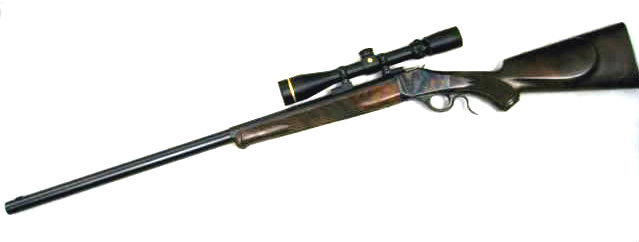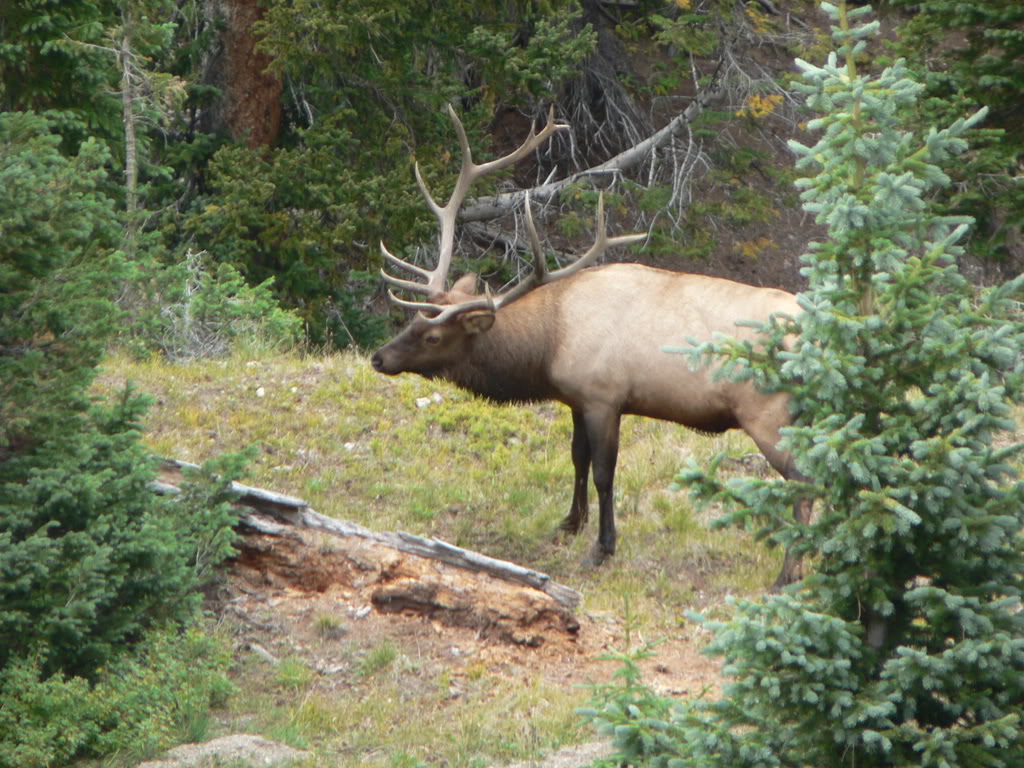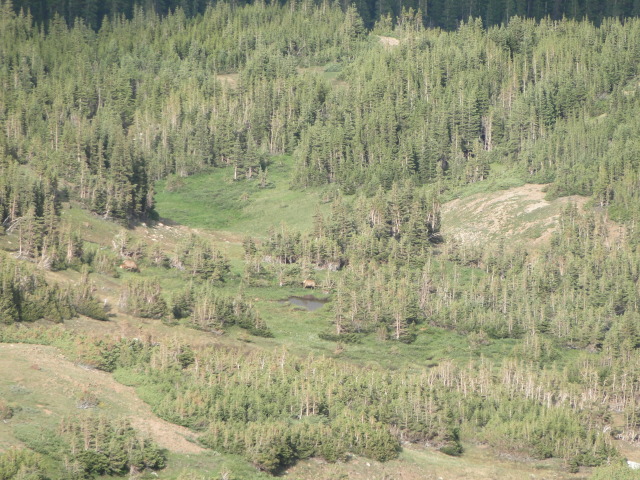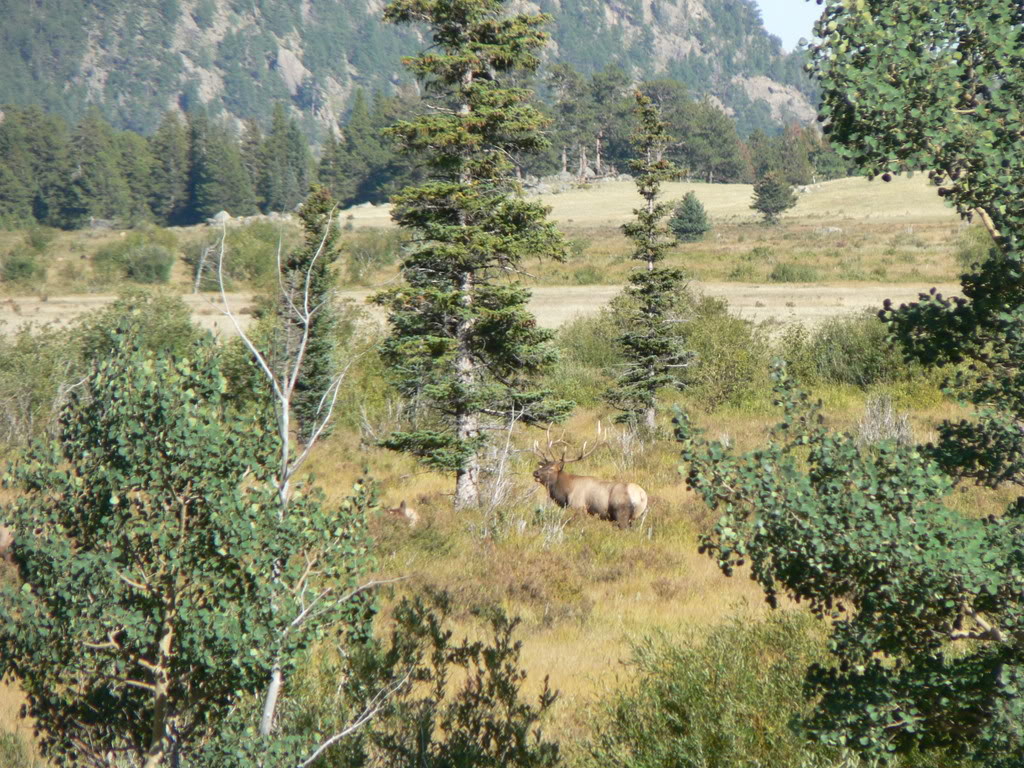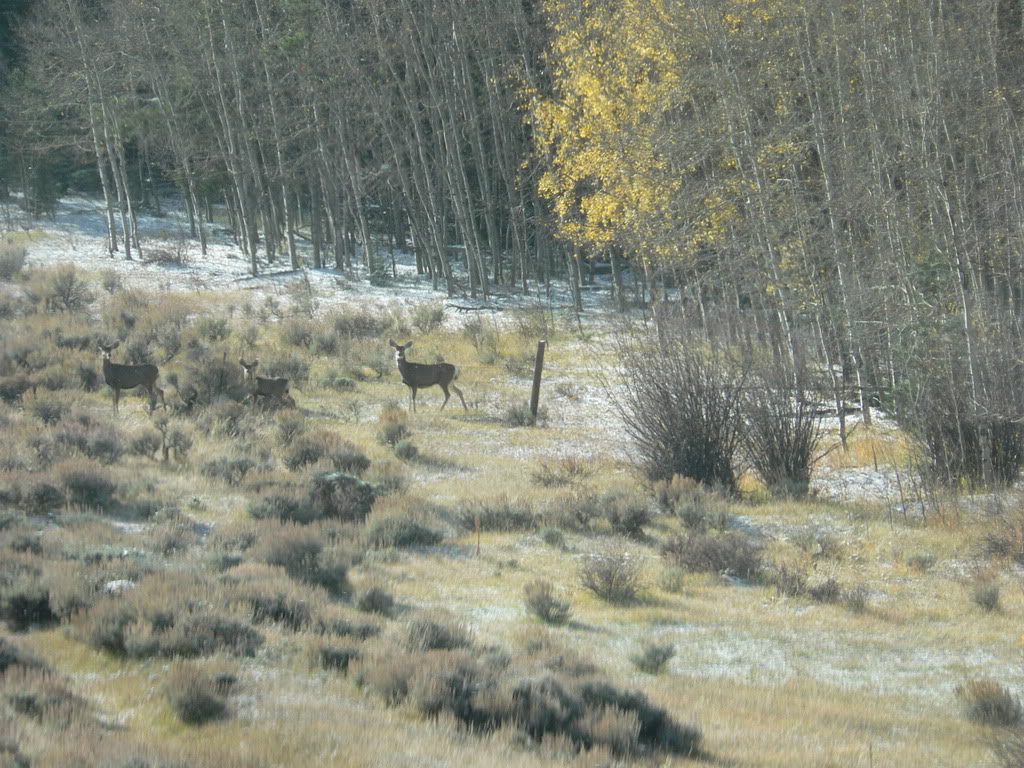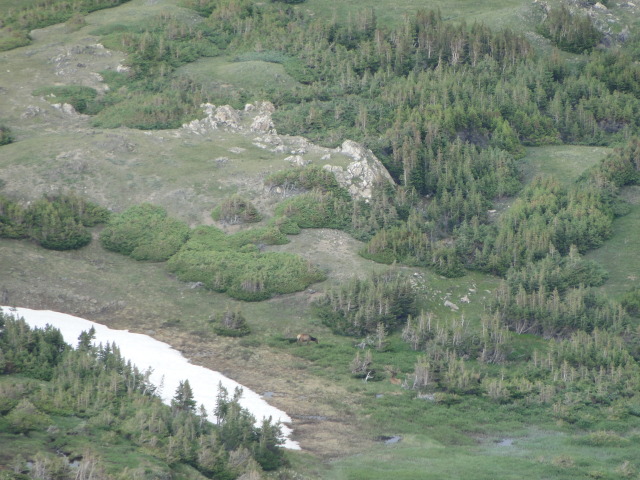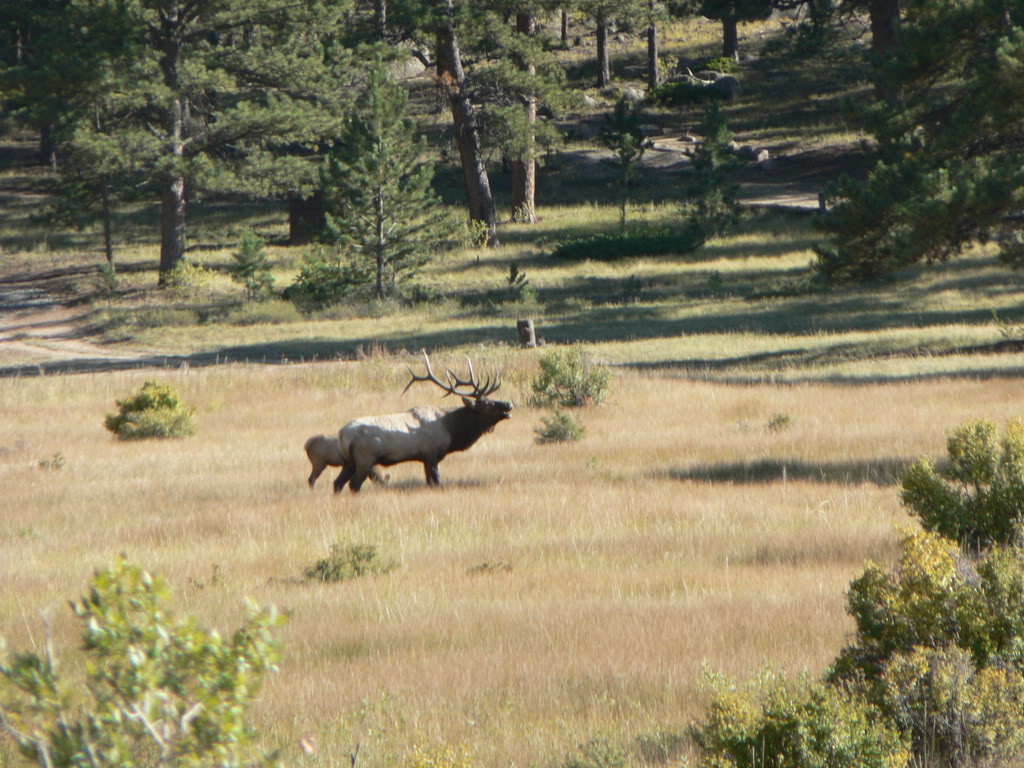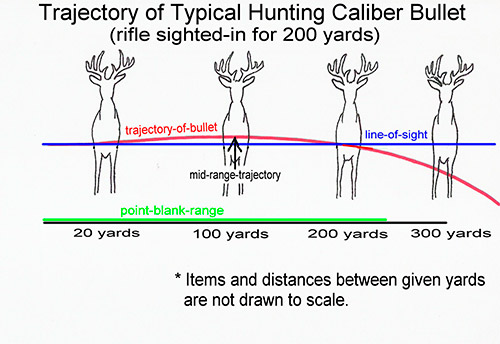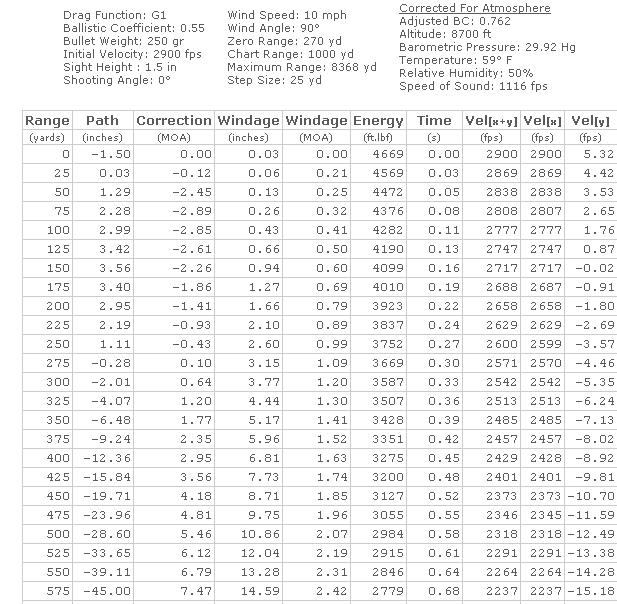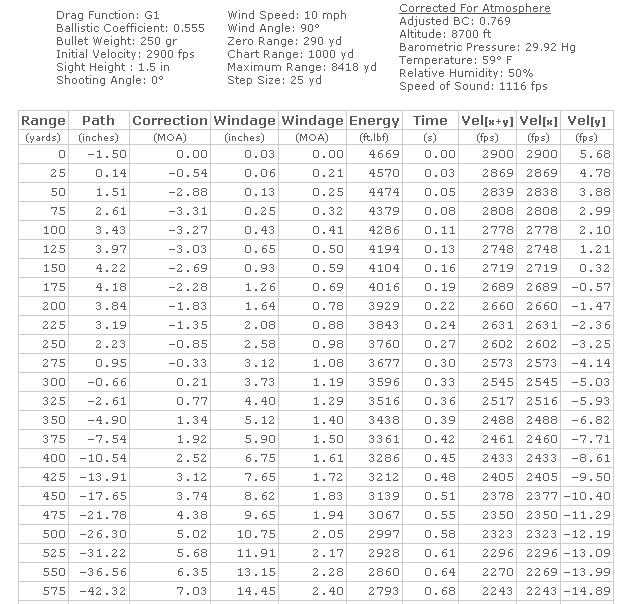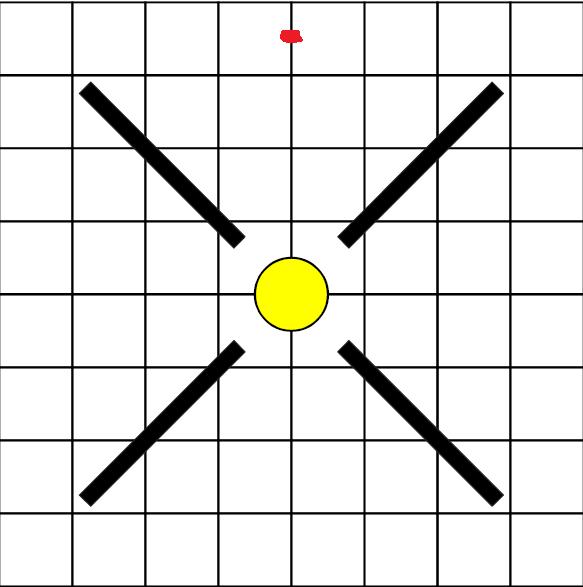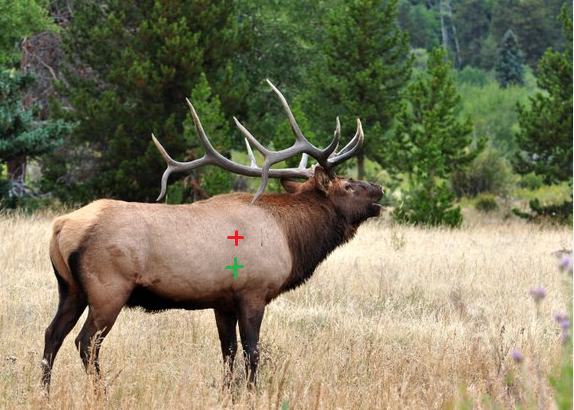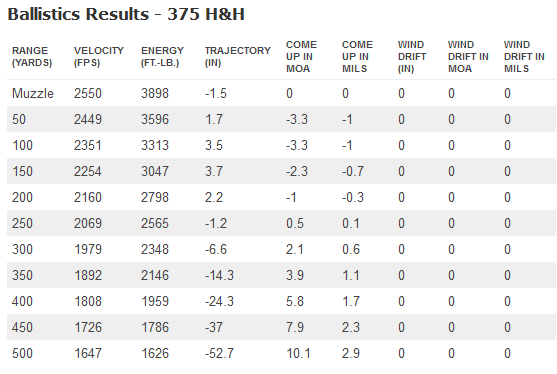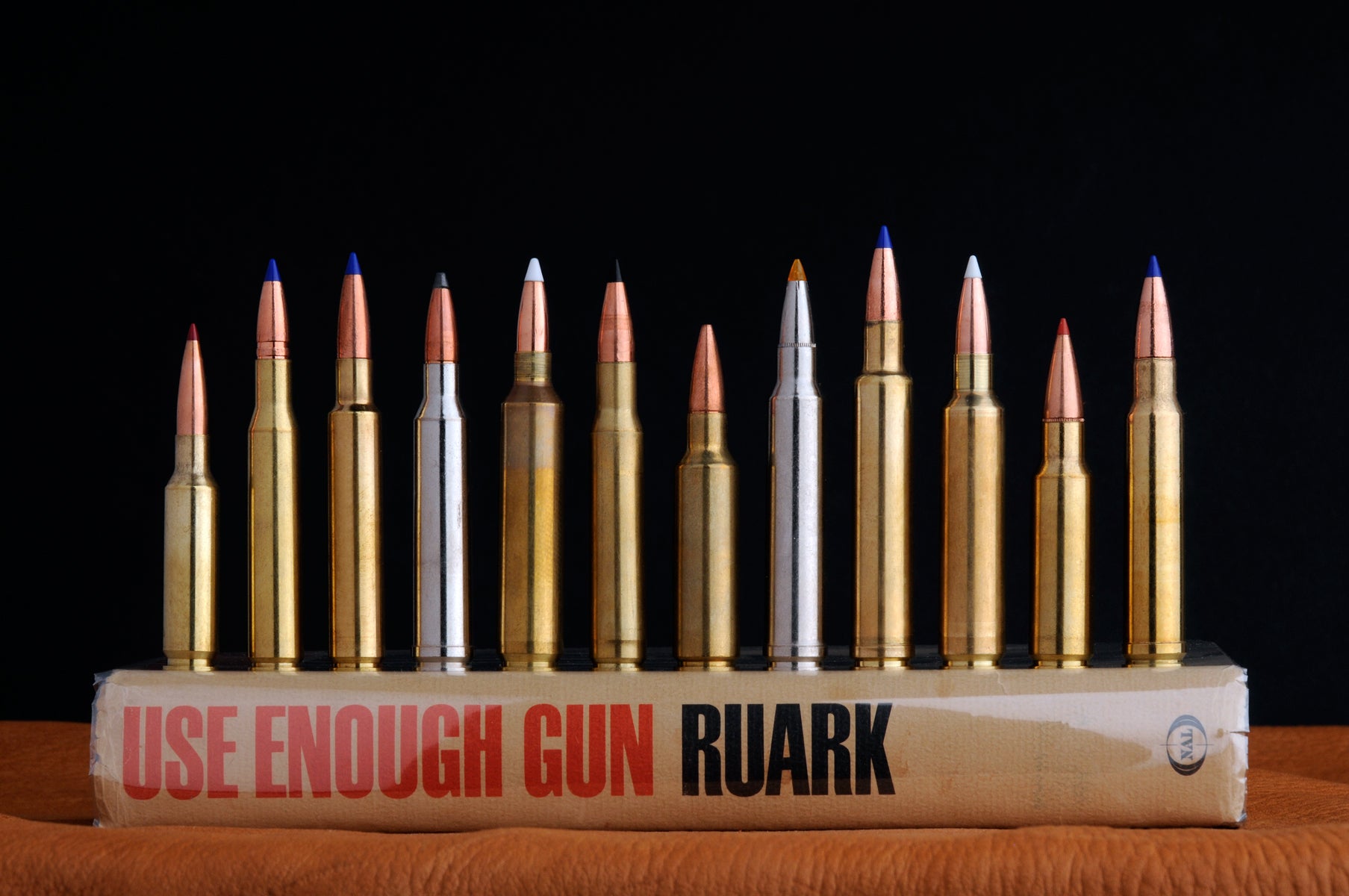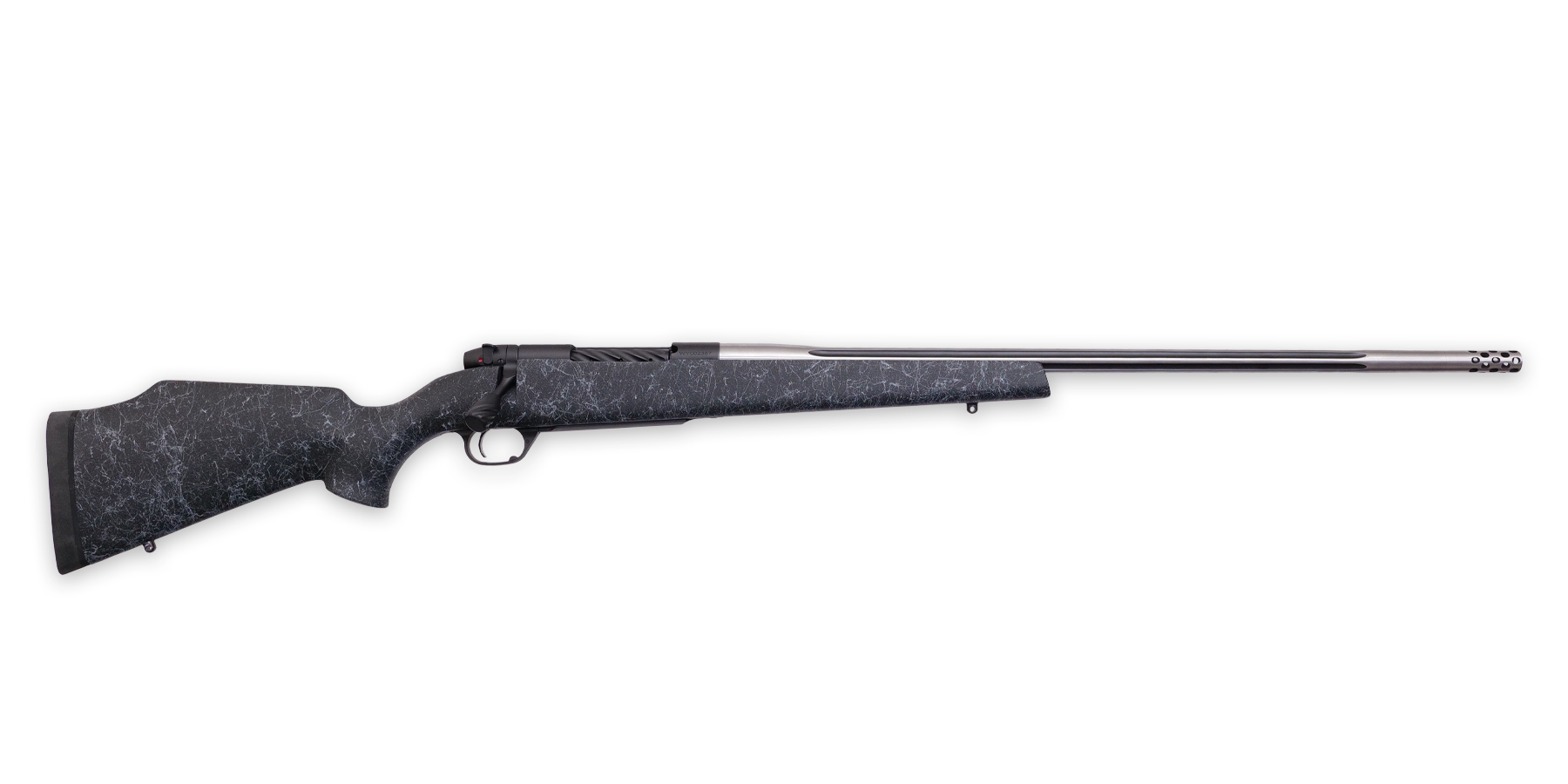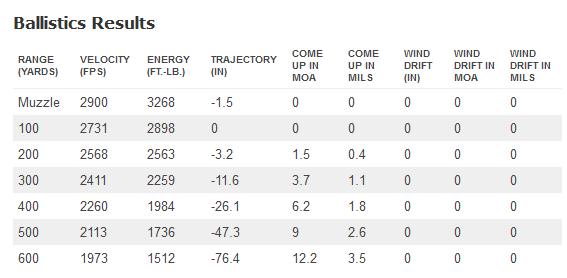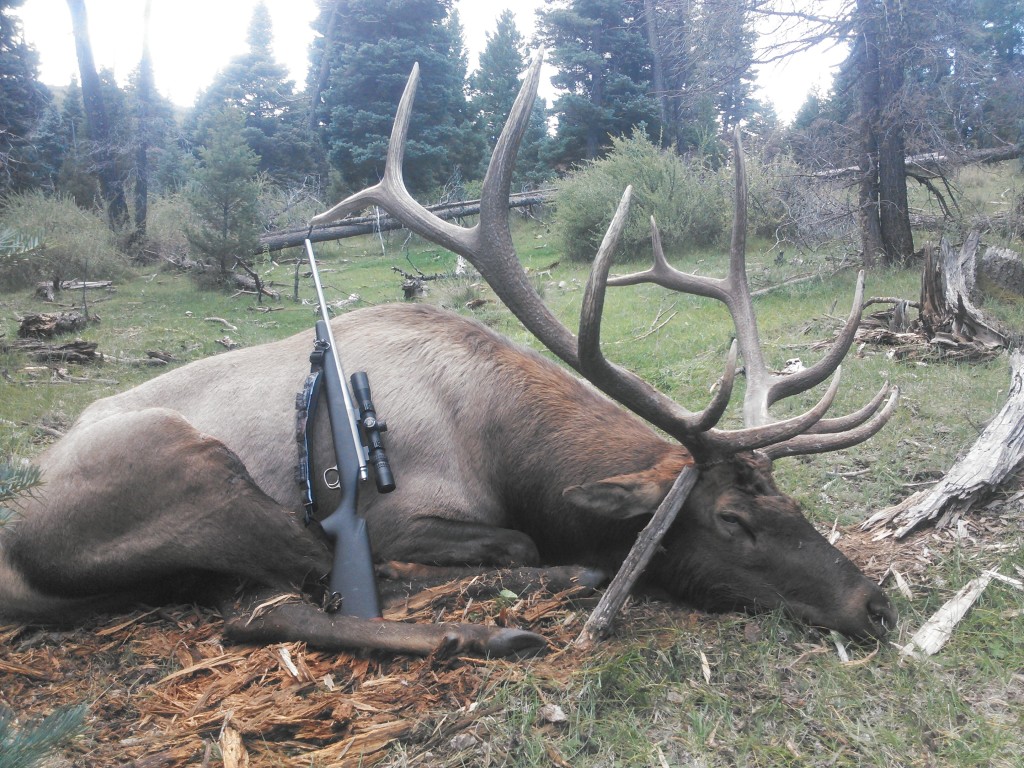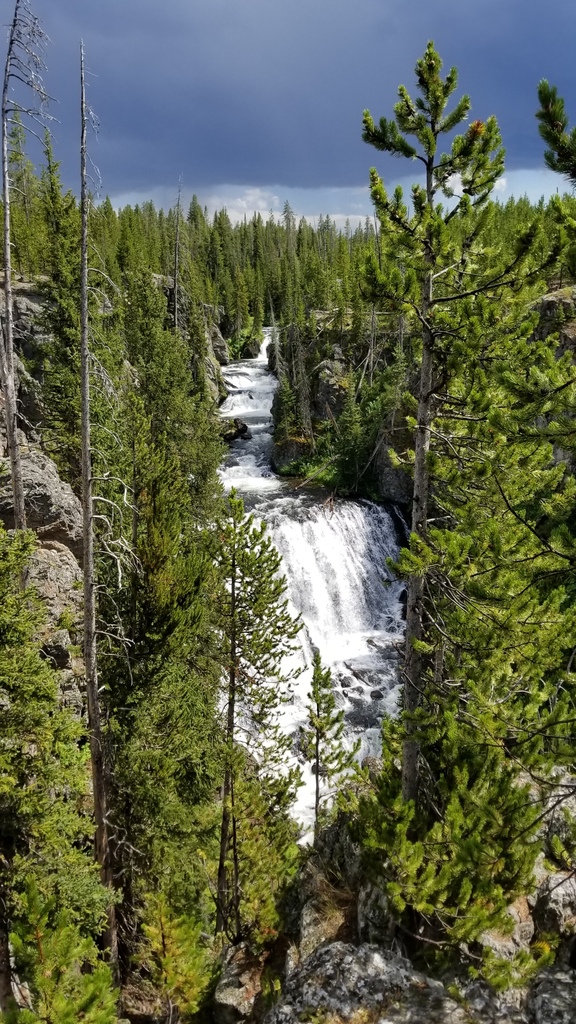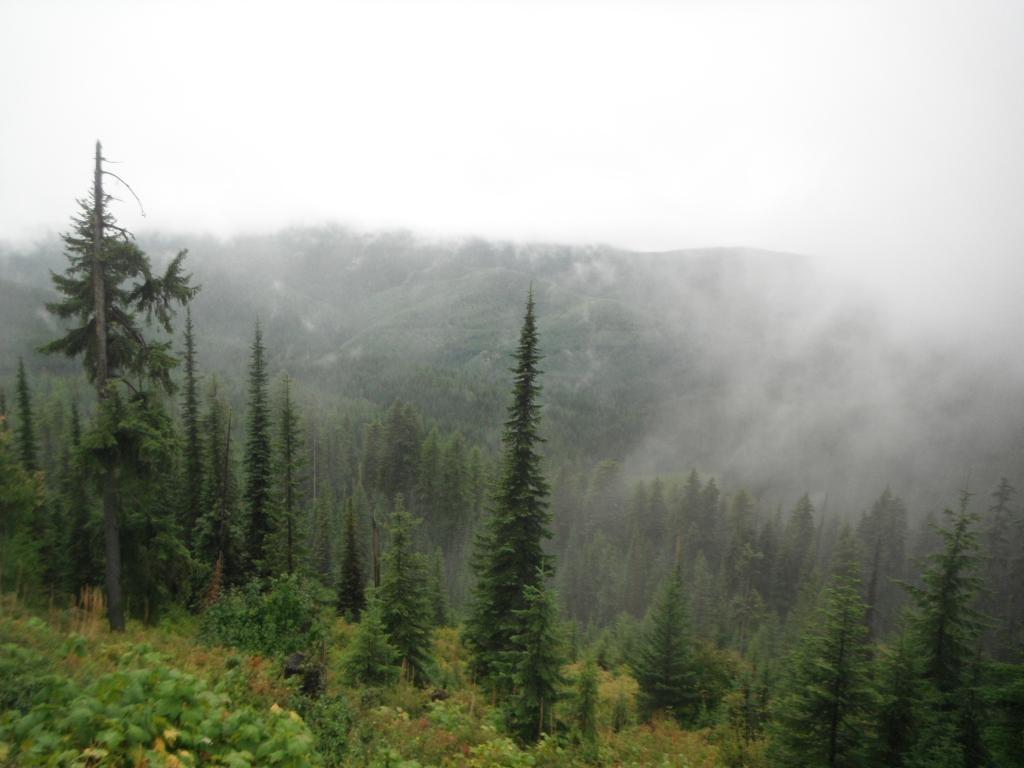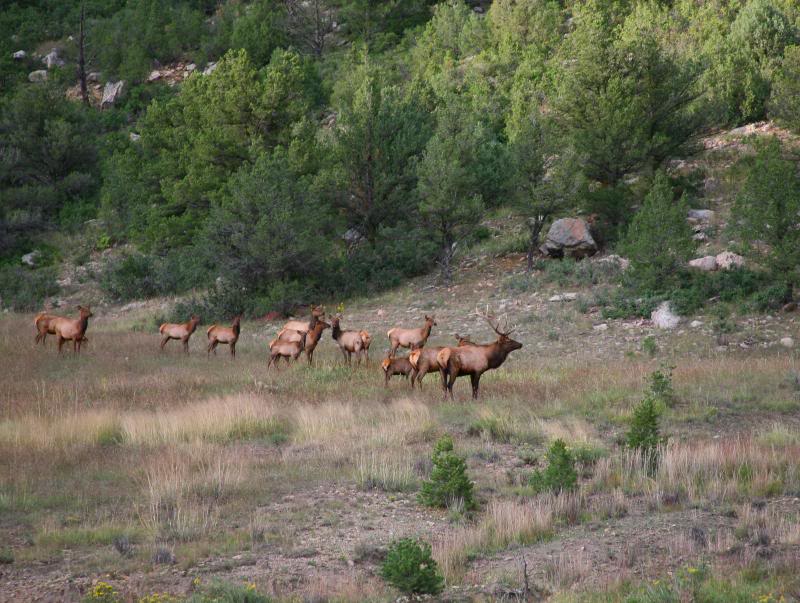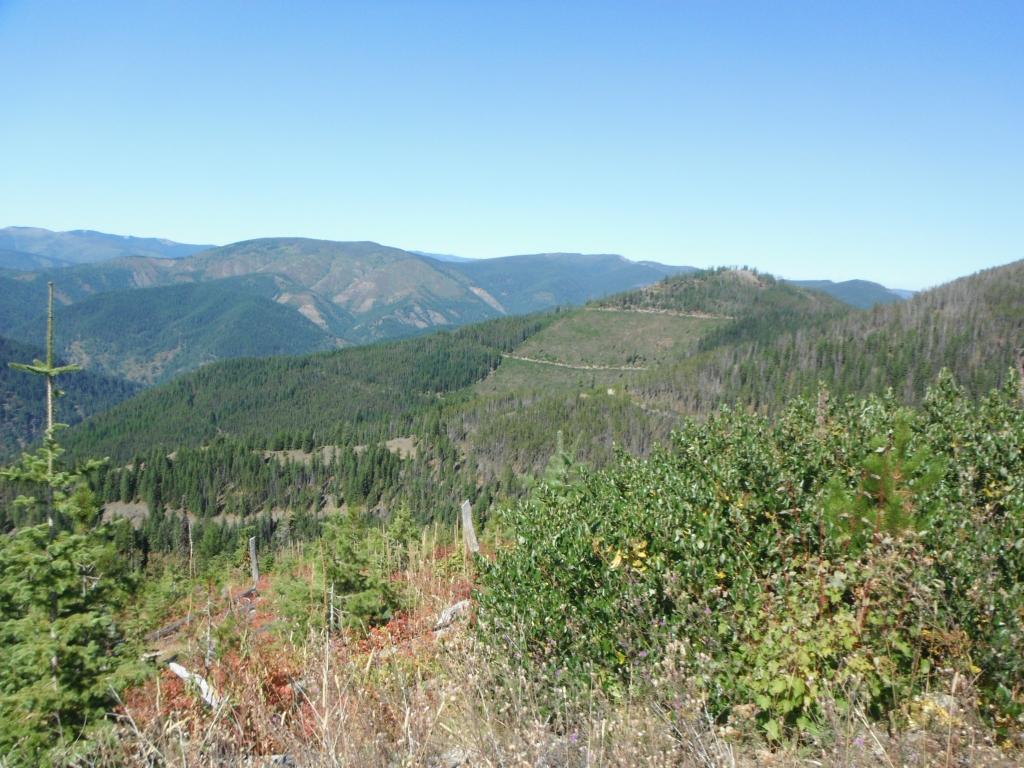now obviously this is a bit tongue in cheek,
because different areas may require different equipment,
and if you watch most videos or out door shows,
or read most hunting magazines,
you might get the idea most elk and mule deer are usually shot at long distance in open grass lands.
While this is true in some areas,
,its certainly not true for many areas I've hunted over 5 decades, most of the guys I started hunting elk with,
advised using a 30/06, or a 7mm or 300 mag, but over 5 decades , and while its certainly true ,I watched what the guys I hunted with carried every year, and while most of us assumed we needed a rifle that could reach out to longer ranges and provide great accuracy
that having a rifle chambered in a cartridge that has the trajectory to reach out to 500 plus yards , most of us rather rapidly realized
the area we hunted rarely allowed us to even see game out past 250 yards and most game was shot ate much closer ranges.
and while having the potential too punch lethal holes in any elk, its rarely a lack of potential range thats rarely a required factor in most areas,
simply because game is not stupid and you tend to find most game in thicker cover, aspen, conifer, oak brush etc.
magnums have become much less popular among the majority , as handy carbines are much more popular.
MOST of the guys I hunt elk with have a browning BLR ,
(browning lever actions) in caliber's like 308 win, 358 win or 450 marlin,
OR a good single shot RUGER OR BROWNING or a lever action or a semi auto like a browning BAR in 270 win or 30/06 or 300 win mag,
the little secret! in experienced and skilled hands they all consistently KILL elk!
a few guys like marlin 45/70s or a Remington pump action in 30/06 or 35 Whelan,
as these are very effective and popular choices. over the 5 decades we hunted in Colorado,
HAVING OR MAKING potential shot opportunity's over 250 yards have been VERY RARE !
long range rifles are not mandatory for most of the areas I've hunted over the last 40 plus years,
in either Colorado, or Wyoming, for ELK!
at least in all the areas I've hunted for the past 40 plus years,
both elk and mule deer are much more common in rolling hills covered with aspen and scrub oak, or mixed aspen and conifer.
now there's not a hunter anyplace that would not like a rifle that shot as straight and flat as a laser beam but in the real world that's not available and even the more common rifles like a 30/06, with a 180-200 grain bullet,
shoot more than flat enough to easily bag most elk.
in fact I'm the only one who regularly carries a 375 H&H or 340 wby,
HAVING 100% confidence in what you carry matters
I feel after decades of seeing the results that if your hedging your bets and want a rifle,
that can reach to the longer ranges, those two cartridges provide exceptional power and a decently flat trajectory
but in most places Ive hunted I find elk vastly prefer to stay where there's thicker conifer and aspen for cover, ideally near water sources and if you can get in close before spooking them, shots over 120 yards or so are rather rare!
sight in either of those two rifle cartridges to hit 3.5" high at 100 yards and your hitting , vitals with an upper shoulder cross hair hold on an elk out well past 250 yards thus from point blank to maybe 270 yards that hold will result in a very dead elk if your a good shot.
(its been decades since I needed to take a shot over 250 yards) simply because elk don't stand out in open pasture like they show in hunting magazine photos taken in PARKS where elk are not hunted.
areas that look like this are where I find most of the ELK
one of the most popular rifles many of the guys I hunt with prefer to carry loaded with speer 250 grain bullets
 yes that 340 WBY FIBERMARKS DEADLY ACCURATE, but heavy, and while ideal for longer ranges,
yes that 340 WBY FIBERMARKS DEADLY ACCURATE, but heavy, and while ideal for longer ranges,
my 375 H&H carbine and 35 whelen slide action or 358 BLR get more use in stalking timber in deep canyons
its not so much what rifle or cartridge you use, as its is how well you use it!(and understand its limitations)
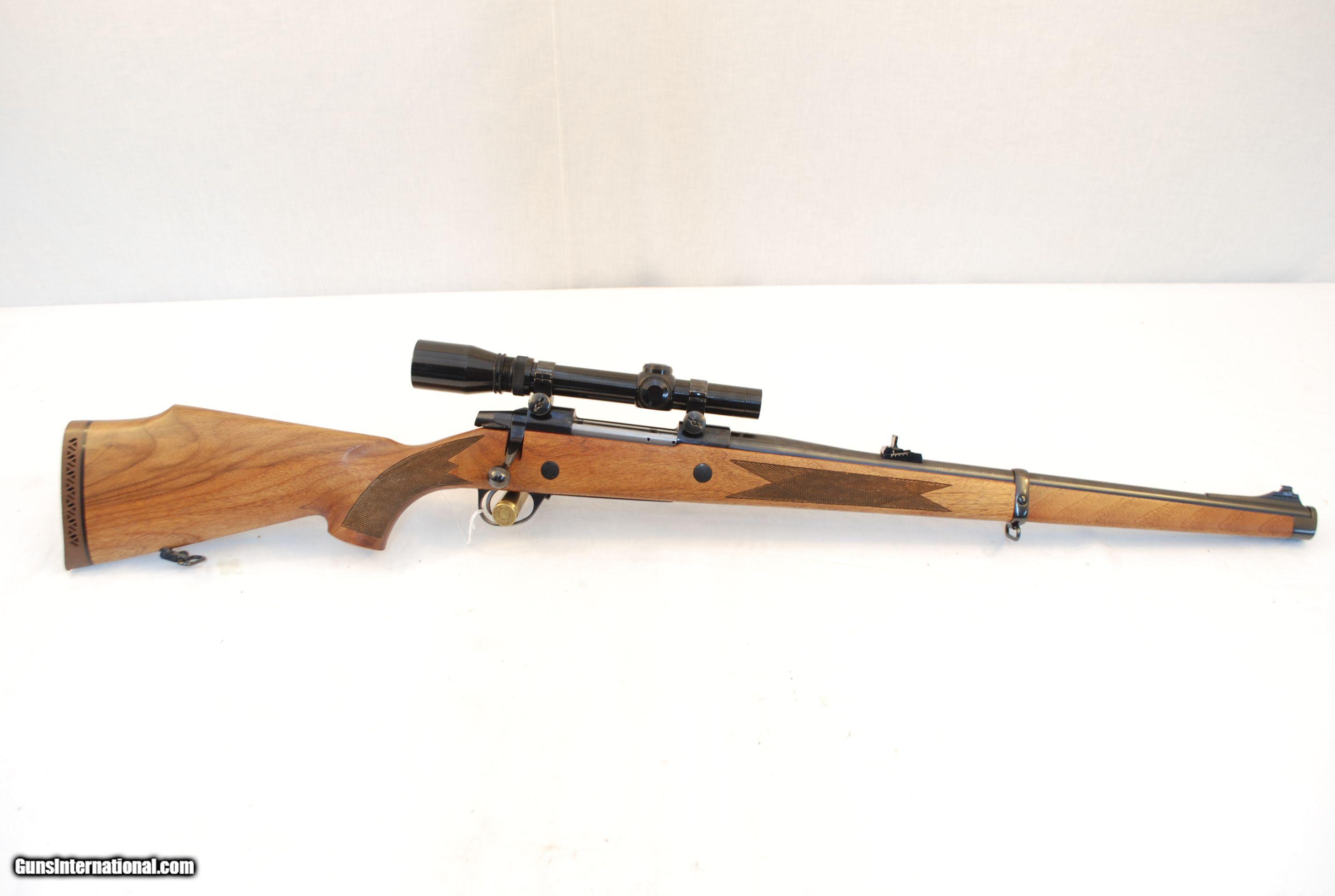
and among the guys I hunt with, the 358 win BLR and 35 Whelan 7600 Remington's are increasingly more popular

look at the pictures below, these are common areas you see elk and mule deer in,
not the open areas you see game in magazines, where pictures are commonly used ,
to show game ,pictures that were taken in national parks, you rarely see game in areas where you can see more than 250 yards due to brush and terrain
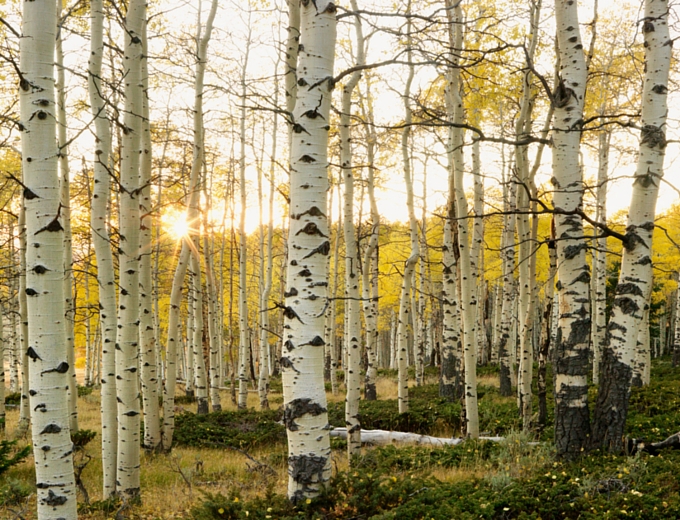
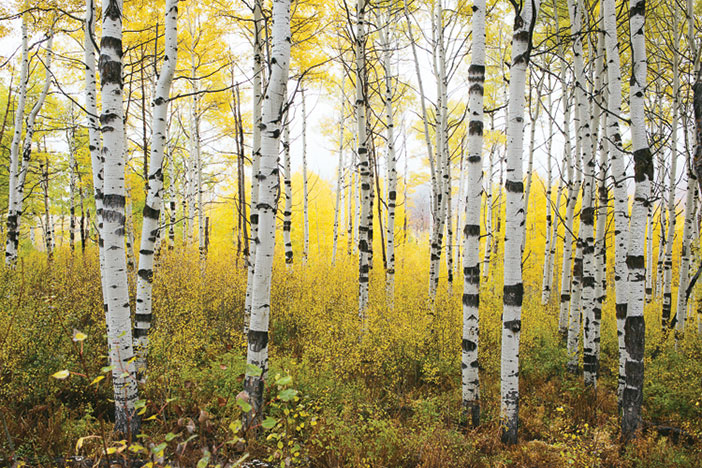
because I've hunted mostly where the game actually is ,in ASPEN like this where ELK bed and feed you simply won't see them out past 200 yards , due to terrain and cover
especially in thick timber and steep canyons.
I guess I had a huge advantage in that I got the opportunity to go on my first elk hunt when I was about 19- 20 years old. I learned while being mentored by 4 old geezers, who were members of the local rifle range,
guys who had been making the trip out west too hunt elk,for decades before I had been granted the privilege,
of being asked to join them and watch and learn from their experience.
I was specifically told what to buy wear,and bring and it was assumed I would take that advice as it was gleaned from decades of experience,and while I just "KNEW" I knew these old guys were not up on the newest stuff from reading all the magazine articles I also knew I wanted to fit in and be invited back so I followed the advice to the letter and for several years I worked, and I collected a legal elk on both of my first two trips using the 30/06 760 remington "loaded with 220 grain REMINGTON PETERS AMMO" that I was told was the "BEST DARN RIFLE AVAILABLE" for elk
now in every magazine you see youll find pictures of elk ,
(mostly taken in places like YELLOWSTONE PARK)
where ELK stand out in the open fields, but in areas that get hunted elk are rarely that stupid and those few that are don,t last very long.
once the first few car doors get slammed, and the first few shots get fired all the reasonably smart elk retreat to the remote side canyons and thicker brush. yes you might find a good place to intercept them as they move on a good choke point in the terrain as they vacate the easy to access areas but for the most part youll be sneaking thru aspen and oak brush and conifers, and shots over 250 yards will be rather rare, and if you can,t consistently place shots accurately under field conditions, what you carry won,t matter much!
the head stamp on the case or the caliber used is far less critical than you might think as long as the rifle is able to place shots accurately and punch holes clear thru an elk at any reasonable range.
your almost always better off using a familiar rifle you've practiced extensively with ,and one your 100% confident in, rather than trusting some rifle that your just learning to use.
I will also point out that in practiced hands a 270 win or 30/06 with premium ammo will kill any elk or deer, but the heavier calibers like the 35 whelen and 340 wby do have the potential to hit a noticeably harder and more damaging blow, thats not necessarily more lethal but it certainly seems to get an elks attention quicker in my experience.When I started hunting I carried a 760 rem in 30/06, on the advice of several experienced mentors, it worked great, but I was under the impression, that I needed a magnum caliber as the first couple elk I shot failed to instantly fall over when hit,
I upgraded to and I have mostly carried a 340 wby mark V or a sako 375 H&H carbine,

after 47 plus years of hunting I don't think I've ever seen a place, terrain, a distance,or an animal I could not have taken cleanly with a 308 win, if I could get into a good solid shooting position, with a quality rifle like an M1a ,
but there's a difference between having the ability to place a shot that will be lethal, and placing a shot that is very likely to be almost always be very rapidly lethal, I've shot several elk with a 30/06, they all dropped inside 50 yards and in under 40 seconds
I swapped to a 340 wby, similar too this

please don't misunderstand, having a rifle that potentially has extra reach is a plus...
it's just not a factor that you'll need to use very often,
in the areas I hunted for decades
http://garage.grumpysperformance.co...ou-so-dependent-on-your-weatherby-rifle.2403/

450 marlin or a 358 win cartridge chambering in a browning BLR is a good option in the thick timber I normally hunt.
 35 whelen
35 whelen
this may sound a bit odd, but the 358 BLR and remington 7600 pump action, 35 whelen
are both highly respected and sought after by the group of guys I hunt with,
as they are reasonably light, accurate, powerful and have proven very effective, loaded with 225-250 grain bullets
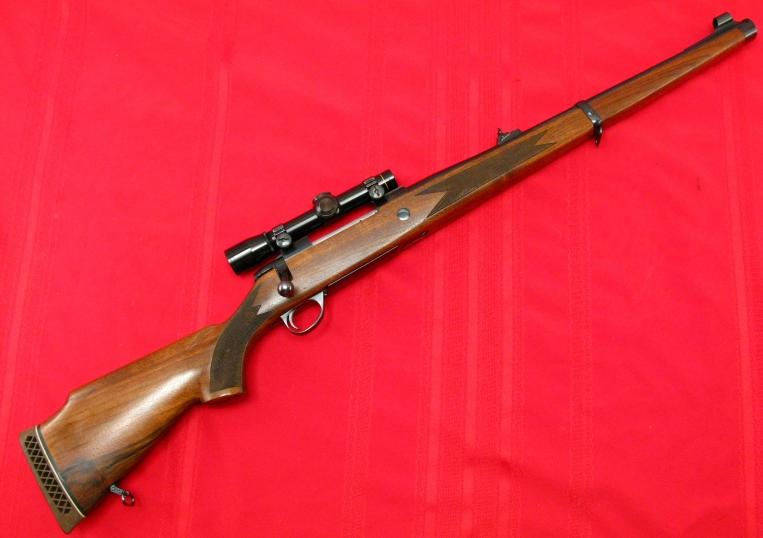
375 H&H
one or at times two of these four make almost all my hunting trips


expecting the increased power to make much quicker kills,
it definitely tends to get a much more obvious and pronounced reaction, from game from bullet impact but in my experience its not a huge improvement in lethality, it kills a bit quicker but in both cases a single well placed hits lethal
these did not kill any better but you darn sure got a more noticeable reaction when you hit game! (they became my trusted companions for decades.)
I have had a remington 7600 in 35 whelen as a shared hunting camp back-up rifle available on many of the trips to hunt elk, and its saved the hunt for several guys over the years when for various reasons their rifle stopped functioning.
the more experience I got the less I worried about the rifle being used, simply because Ive seen everything from a 257 robert's BLR to a 458 win ruger single shot, used successfully, to kill elk.
I personally trust, and prefer to carry the .338-.375 caliber rifles , but Ive seen that anything from .257 to .458 works if the guy carrying its knows how to use what he has in his hands.
I've just seen too many elk and big mule deer killed very dead with a 257 roberts, 6.5mm swedish mauser , or 308 win, to think you need a magnum, or guys using a
444 marlin, 45/70 or 458 win to think you need the flattest trajectory available
,I go to the local ranges on a regular basis,
I usually have my 35 whelen,my 340 wby or my 375 sako,
I still use my 35 whelen 7600 pump action,occasionally, if you have a 270 win or larger caliber rifle and you select and practice shooting from field positions with premium ammo with a 130 grain or heavier projectile,you'll do fine if you know how to use it effectively .
keep in mind, being in good physical condition, knowing the games habits and anatomy and dogged, persistence, and learning how too shoot rapidly and accurately from field positions will have far far more effect on your success than any change you make in the rifle you carry.
you can have the best equipment available, but if your not willing to cross enough territory to be in the right place ate the right time, and that generally will not be in sight of camp,your hurting your odds of success.
my late hunting partner considered anyone not equipped, with a browning BLR in caliber 358 win ,
while hunting elk too be hampered and working under a sever dis-advantage
I loaded for him for almost 30 years , fed 215 primer, 250 grain speer and 44 grains of IMR 4064
that carbine accounted for at least 14 elk over 35 years.
.

theres several guys in my elk hunting club that really prefer to carry a browning BLR, my late hunting partner, RON, preferred a BLR in 358 win loaded with a 250 grain speer over 44 grains of IMR 4064 and a fed 215 primer
consistent 1"-1.2" bench rested 100 yard 3 shot groups were common.
sighted in at 3.5" high at 100 yards its almost dead on at 200 yards and about 10"-12" low at 300 yards, he used that load for over 3 decades and was very successful, most elk were 1 shot kills.
I don,t think either guy ever had in the last 35-40 years a single shot taken exceeding 200 yards
https://www.speer-ammo.com/products/bullets/rifle-bullets/hot-cor-rifle-bullet/2453
http://www.handloads.com/loaddata/d...;type=rifle&Order=Powder&Source=
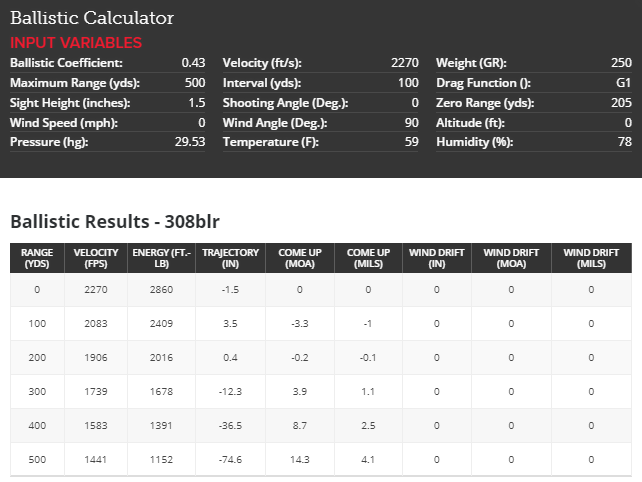
one other guy FRANK, prefers the 308 win BLR loaded with a speer 200 grain bullet over 45 grains of WW760 was his preferred load.
to me a firearm is just a tool,
and I try to select the best tool for the particular conditions, of,
terrain, game hunted, max range,
basically the potential limitations of the job at hand.
yes I have several favorites,
and I've tried dozens in the selection process over 50 plus years of hunting in several states
generally one of the rifles below get grabbed on the way out the door,
simply because they work flawlessly
a synthetic stock 340 wby mark v,
a sako, synthetic stainless, 375 H&H,
and two browning blrs ,one in 358 win and one in 450 marlin
and a browning 78 single shot in 300 wby
and a bar in 270 win.
and a remington 7600 in 35 whelen,
what you use is less important than your skill & experience ,
using it,
and YOUR understanding of the limitations in its use.
buy a rifle you like, practice a great deal, and learn to shoot well off hand and from a rest,
until you can rapidly and rather consistently hit a 3"-4" orange dot at 100 yards off hand,
and a 2" dot with a rest and you'll consistently kill game.
https://www.speer-ammo.com/products/bullets/rifle-bullets/hot-cor-rifle-bullet/2211
http://garage.grumpysperformance.co...le-to-accurately-shoot-up-or-down-hill.15229/
http://www.handloads.com/loaddata/d...;type=rifle&Order=Powder&Source=
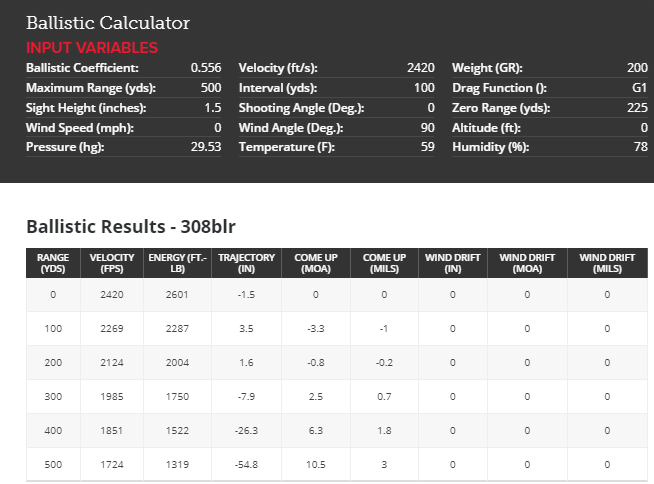
he constantly referred to my 340 wby as a "damn CANNON"
we were both successful.
Many of the guys that are not lever action fans, buy bolt or pump actions in caliber 35 whelen, the 35 whelen adds about 200 fps to the same bullets the 358 win shoots,
( I doubt any elk or deer knows the difference)several of the guys I hunt elk with think the 7600 35 whelen, is a top choice,
I've used one and I don,t see a damn thing thats in need of improvement if you hunt the ticker timber areas.

yes, I have a 7600 35 whelen, that I purchased as a camp back-up gun,
a rifle thats been in constant use , when guys in elk camp,
have issues like fogged scopes and loose mounts, and don,t bring a back-up
and that rifles use has resulted in 4 people purchasing a similar rifle after using it...
.Im sure it would be even more if the 35 whelen/7600 pump guns were currently easy to find now ,
as they seem to have been discontinued
btw \54 grains of ww748 under a speer 250 grain, is lethal on elk
http://www.handloads.com/loaddata/default.asp?Caliber=35 Whelen&Weight=All&type=Rifle&Source=
http://www.handloads.com/loaddata/default.asp?Caliber=358%20Winchester&Weight=All&type=rifle&Order=Powder&Source=
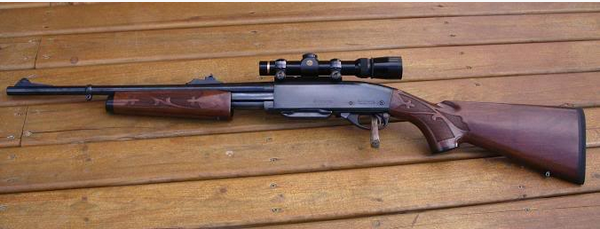
and 450 marlin rifles along, sometimes my 375 H&H carbine,

Ive used a 340 wby and 375 H&H on most ELK HUNTS

http://www.midsouthshooterssupply.com/i ... stic_Black
http://www.shootingtimes.com/ammo/ammunition_st_exforelk_200908/
http://garage.grumpysperformance.co...hat-are-you-looking-for-in-an-elk-rifle.2368/
years ago I saw a game department survey made where they asked hundreds of hunters at a western BLM check point, to look out at 5 different colored flags placed at random but carefully measured distances and write down what each person estimated the distance too be from the check point, they were handed a pen and a survey card, they were told NONE of the colored flags were at an even 100 yard multiple but that was the only info , each flag was a different, color, placed in a
different direction and at a different distance.
the survey taker pointed out each colored flag and asked them to write down their estimated range!
they tabulated the actual hunters field estimates being made on the spot, vs the carefully measure actual distances.
.
.
the results were about what Id have expected..after decades of listening to guys claim they killed deer & elk at 400 and 500 and 600 yards.......
the vast majority were very VERY bad at estimating distances correctly past about 150 yards, some estimates that were over 70% wrong were not uncommon
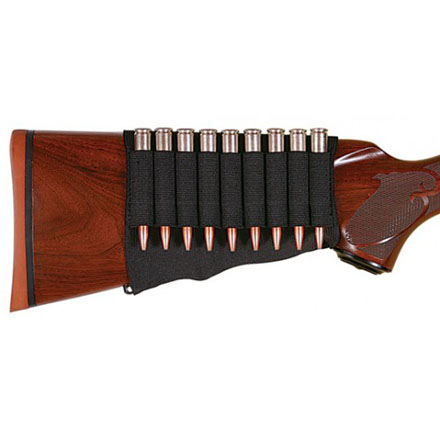

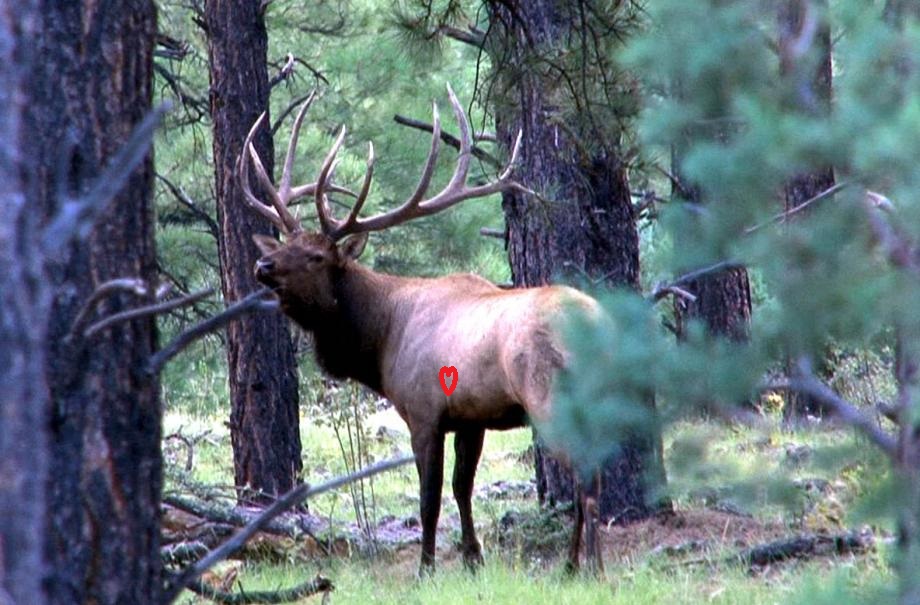

much of the area looks similar to these pictures I found posted elsewhere
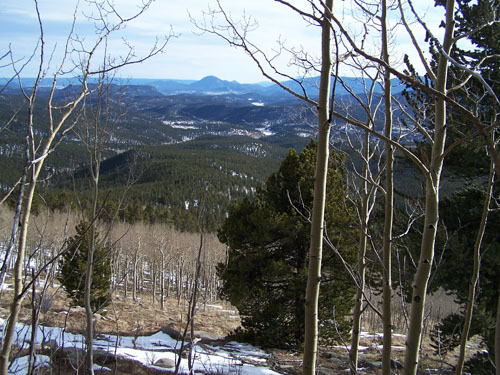
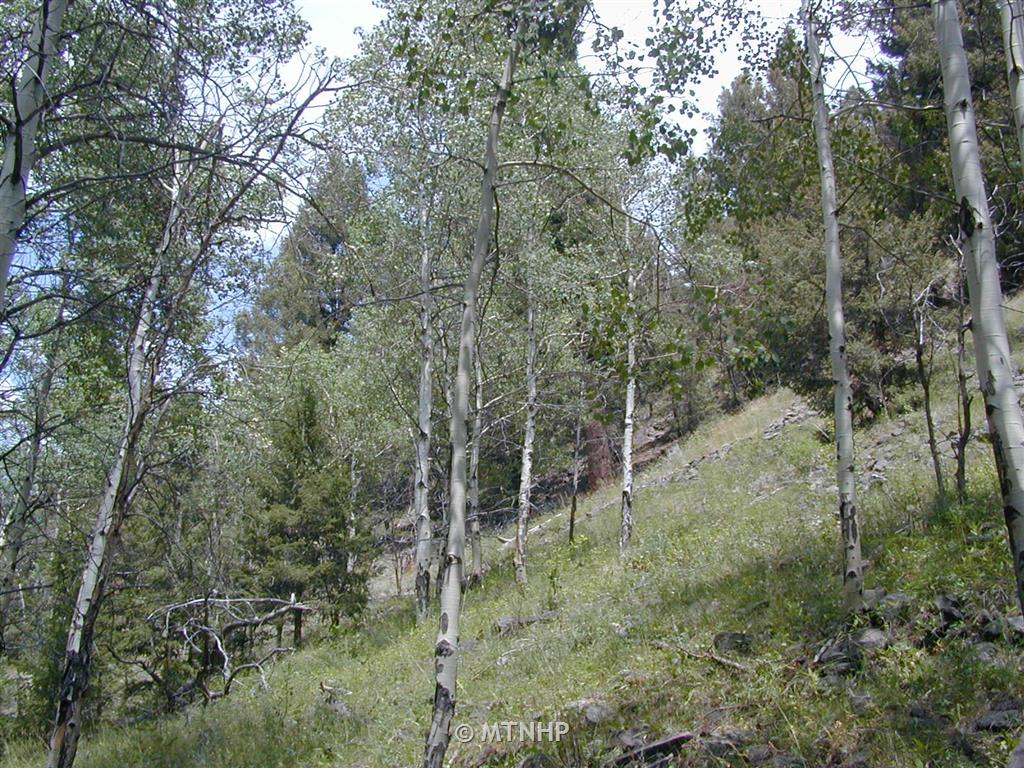
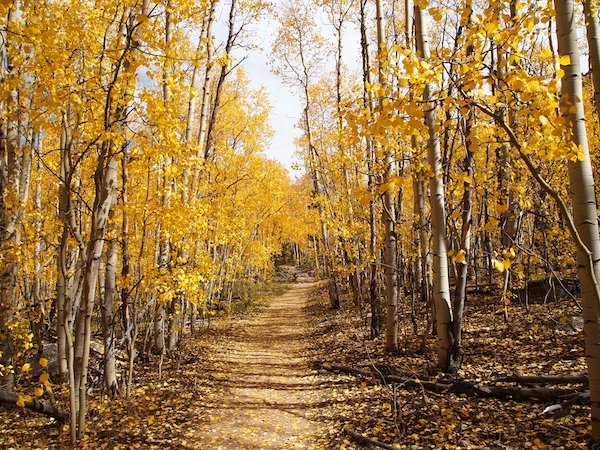
use of a cartridge holder so you have easy access to spare cartridges if you need them,is frequently a good idea
375 H&H, loaded with 80 grains of WW760 under a 270 grain hornady and a 215 federal primer has worked in my sako carbine for decades
I find the obsession with owning an extremely accurate rifle rather amusing ,mostly because Ive "been there" and used to be similarly obsessed until experience showed me that about 90% of the problem involved was not shooting and hitting game once it was located, but in locating the game and getting into a semi reasonable range and having the opportunity to make a shot at the vitals of at least a slowly walking or preferably stationary target.
Now I'm not opposed to taking a shot at a slowly walking elk or deer if the conditions make me reasonably sure I can accurately place the shot, but where Ive hunted for decades trees, brush and terrain tend to limit your options and ranges.
yeah! making the shots far down the list of issues , finding the game and getting into position to make the shots usually a far more difficult proposition than squeezing off an accurate shot once your into position.
sometimes, I use my 375H&H, sometimes my 340 wby mag, and Ive used a 358 win BLR, 35 whelen,a 338 win, 45/70 MARLIN,and 450 marlin BLR but IM constantly being told at local ranges that my choices in rifles for hunting ELK are all wrong by the younger guys, with their 270-7mm-300 mags , now I generally smile and ask how many ELK they have killed, what the areas they hunt looked like, how far the ELK went after they were hit, etc.
about 90% of the time those young guys either have their first hunt coming up, or they might have 1-2 ELK to their credit.
there's certainly nothing wrong with selecting a 30/06,7mm rem mag or one of the 300 mags, but its also not nearly mandatory like some magazine articles seem to suggest.
now Ive hunted ELK for over 40 years , in several states and have only killed a bit over 3 dozen ELK personally,(some years I lucked out and got two(different states) but Ive seen well over 100 elk killed from guys in our group., Ive dressed out many if not most of those ELK. and if Ive learned something, its that its not the caliber of the rifle used so much as the guy behind the rifle that matters in the end result.
in 40 years of hunting ELK I can remember only a very few that were taken by ANYONE in camp that were shot at over 250-275 yards.
my 35 whelen and 340wby have both killed well over a dozen elk each with a single shot, with never a problem. SO Ive GOT SOME idea WHAT WORKS.
AND THE FACT IS THAT IN THE STEEP CANYON COUNTRY IVE USUALLY HUNTED EVEN SEEING AN elk PAST 200 YARDS IS RARE!
when I started hunting ELK , I was 19 years old ,most of my mentors were old geezers were much older ,in their 40s-60s, and most carried Remington 760 30/06 rifles with receiver peep sights and loaded with 220 grain peters ammo, it work well...and it was what I was advised to buy, I tried a great many other things over the next 4 decades, but have to admit that original equipment choice would still work well on 90% of the elk Ive seen in the last 45 years, simply because its fast to use has the required range and power and its easy to carry.
not everyone waits to the week before the season opens to verify the rifle they use is sighted in.
while I firmly support sighting in your deer rifle and going to the local range a few times before the season to verify the rifles still shooting to the point your aiming.
I have used a browning blr in caliber 358 win and the same ammo formula for decades. as has one of my close hunting companions.
(250 speer over 44 grains of IMR 4064 and a 215 fed primer)
I sighted it in 3.5" high at 100 yards, so its dead on at 200 yards and 10" low at 300 yards 30 plus years ago, and I check it several times a year and its never changed, its point of impact.
and yes its very effective on both deer and elk.
my late hunting partner used a similar combo as his primary elk rifle for 30 plus years and always laughed at me for carrying my 340 wby, because In 30 plus years, I doubt either of us shot deer or elk at over 250 yards on any hunt, because we never saw one past that range!
ID be perfectly equipped with my 450 marlin BLR or 340wby or 35 whelen, the rifles caliber is just not as important as the skill used in getting into the herd and selecting the shots, and the ability to locate the herd.Ive even used a 45/70 with hot cast loads on a couple,
if pressed Im sure I could kill ELK with a 44 mag carbine, ELK are just not that hard to kill once you get into a decent angle and range, its GETTING INTO THE POSITION THATS HARD.
find something you shoot well, something fast and accurate out to 300 yards with enough power to kill effectively and you'll do fine, its been a darn rare hunt where shots over 250 yards were even considered, and that's not due to lack of long range skill with a rifle, it due to the fact ELK are not STUPID and rarely stand out in the open! Id also suggest you select at least a 270 win as the minimum caliber and power range for ELK , you can kill elk with a smaller caliber but its generally more difficult in my experience to drop one on bullet impact without some decent bullet weight and deep penetration, and bigger heavier bullets do provide some advantages, and youll seldom get ideal angles or conditions where you can take a good deal of time to set up a shot.
killing an elk is not the same as having one drop on bullet impact, and its critical shot placement , lots of practice with your rifle,and a reasonable power level that consistently does that.

this is NOT a bull I shot,its simply a picture I found posted, but it gives you a good idea of the typical area you still hunt, so you get some idea why I say a long range rifles not mandatory and why one of my hunting partners used a 358 win BLR for 25 years and thought it was the ideal elk rifle, almost any rifle that hits hard out to 300 yards will do fine in my experience.
THESE THREE PICTURES BELOW SHOW WHAT WOULD BE IN MANY CASES EXTREMELY OPEN AREAS COMPARED TO WHERE YOU GENERALLY FIND ELK, ONCE THE SHOOTING HAS STARTED
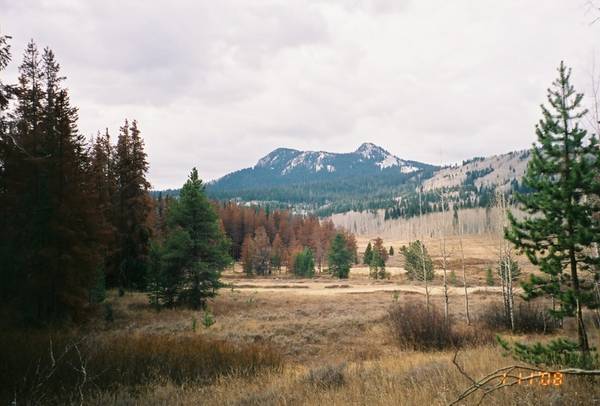
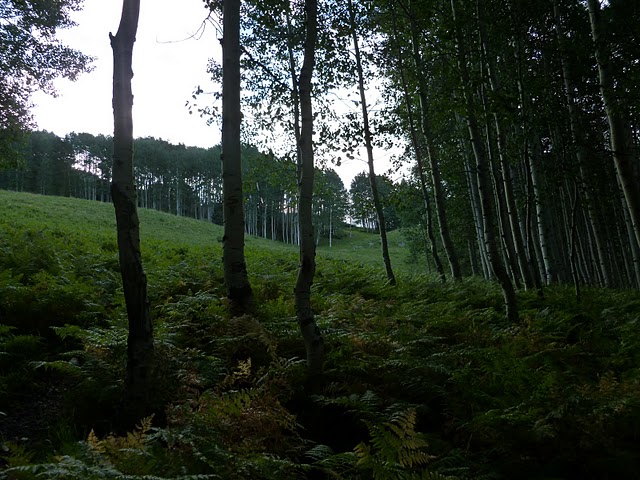
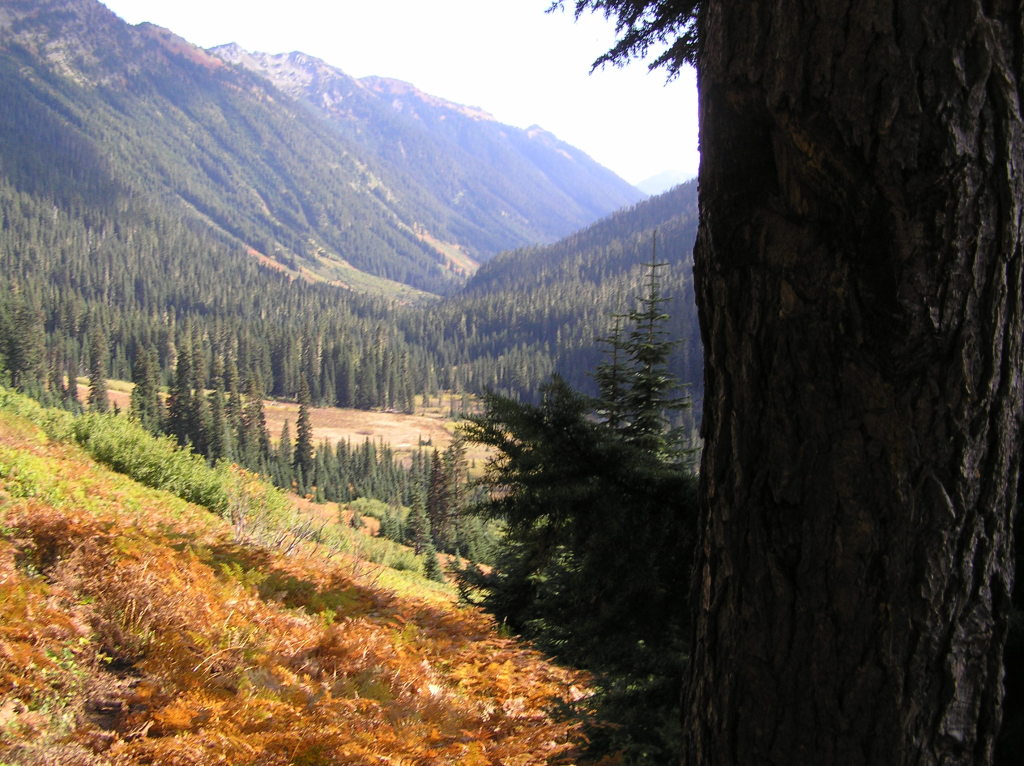
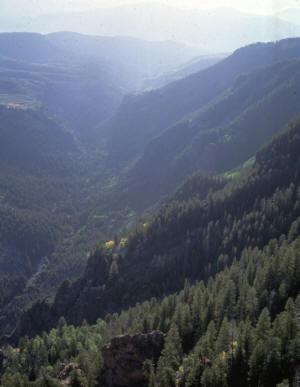
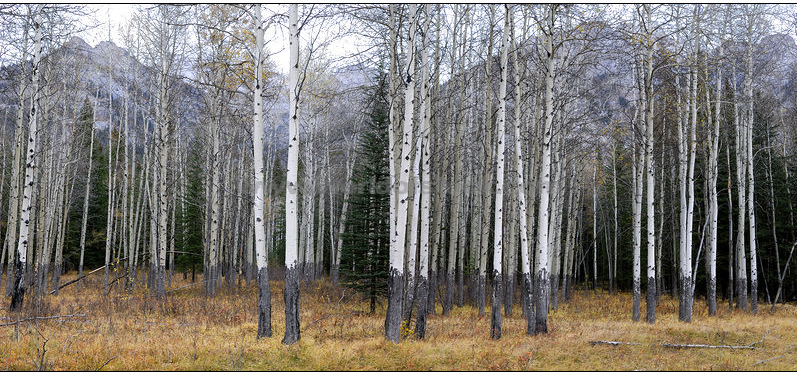



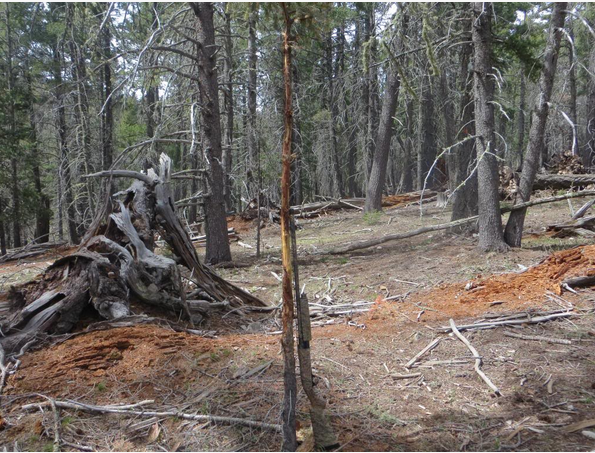
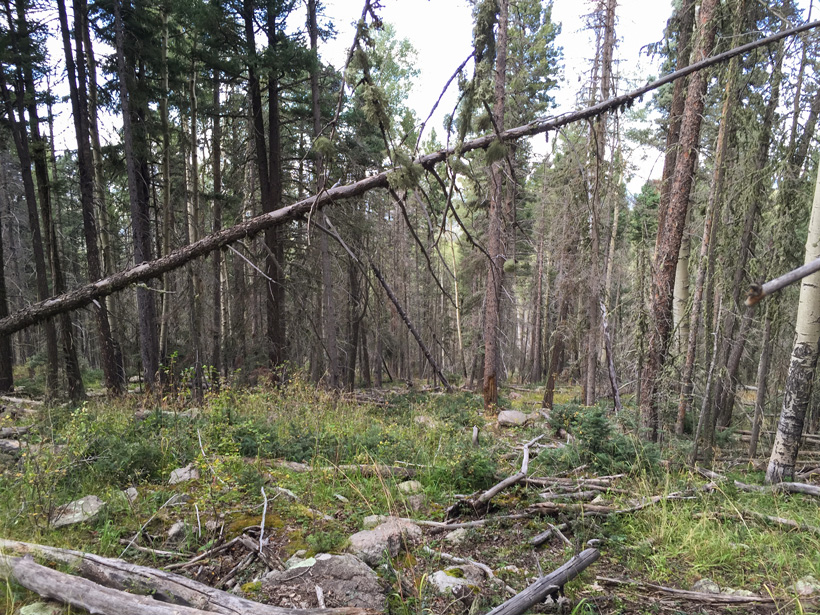


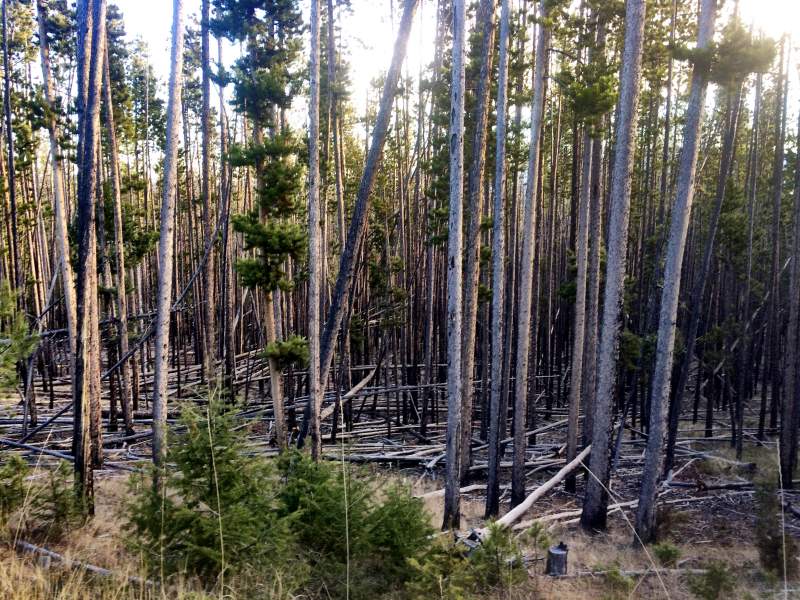

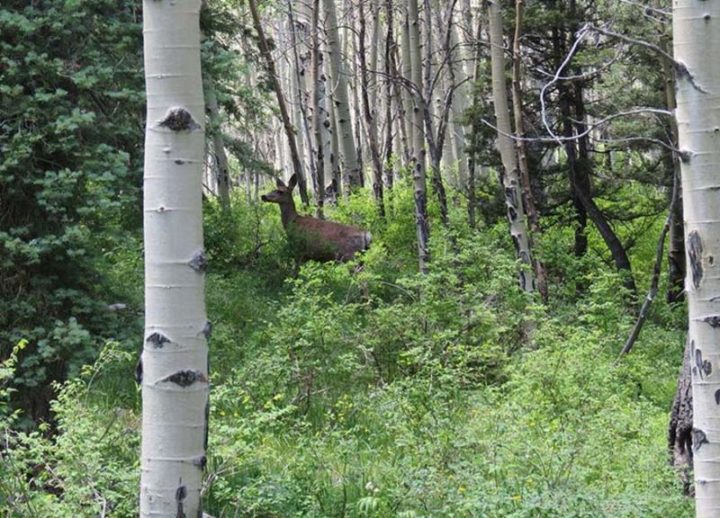

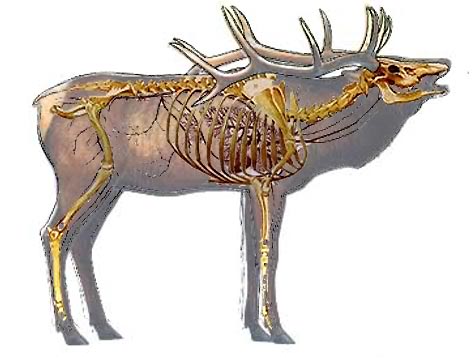
ELK ARE NOT STUPID, as soon as they detect hunters they move to the least accessible areas with the thickest cover , and that usually means youll spend a great deal more time slowly and carefully sneaking thru timber than shooting across open fields like those magazine article pictures taken of elk in parks like yellow-stone suggest.
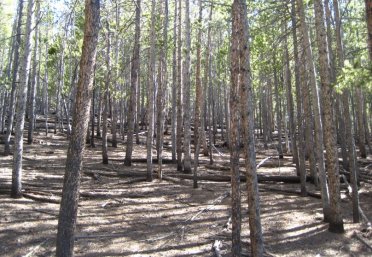
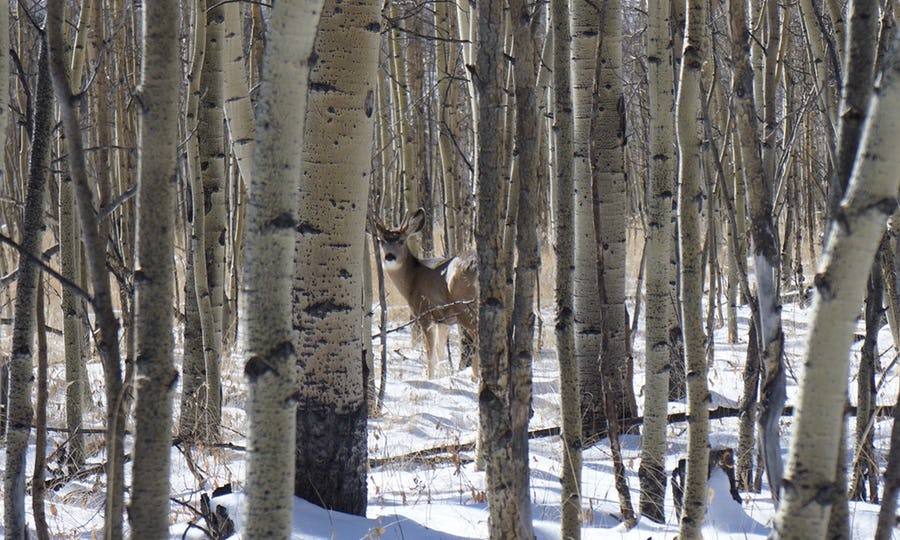
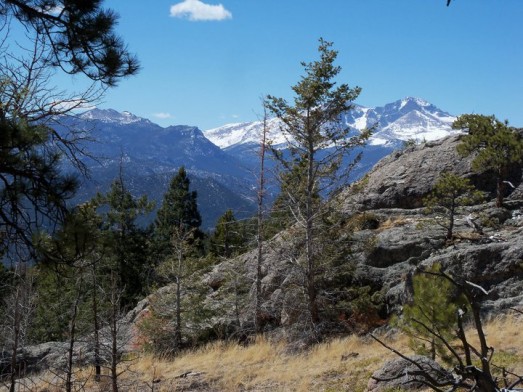
these are rather typical pictures of ELK hunting terrain in my experience
this picture above would be an example of a rather rare exceptionally open area , SIMILAR TOO where I hunt, where you might get a 300 yard shot, but elk are not stupid they tend to avoid crossing most areas like this
“ Spot and stalk and still hunting are quite different.â€
“Spot and stalk frequently morphs into a still-hunt “
Both true but you can,t effectively hunt elk unless you at least know which drainage or canyon currently holds one of the elk herds or groups as the elk tend to move in groups thru several canyons, and in my experience youll rarely see all or even most of the elk so getting in close thru several sets of screening guard cows constantly watching the area to get to a location where you can get a good shot at a legal bull on public land is a challenge.
Now I see all the TV movies and videos, where there’s 50-70 elk streaming thru narrow open meadows and some hunter and guide sitting on a ridge 400 yards out has his pick , probably filmed on private ranches where there’s minimal hunting pressure, or near Yellowstone , but in my 42 plus years of hunting elk that’s just not happening on public land.
What I commonly see is much smaller groups, briefly glimpsed thru binoculars walking into aspen or conifer stands, once spotted the hunter must calculate a route keeping him down wind and in cover and a route that allows him to arrive in a reasonable time frame, and knowing that there a high probability the elk won,t be at that exact location when he gets there.
I was at the range a while back sighting in my 450 marlin BLR and 375 H&H carbine
with the loads I found to be exceptionally accurate ( for the 450 marlin, 50 grains of IMR 3031 and rem , fed 215 primers,405 bullets)( 77 grains of WW760 and a 270 grain hornady for the 375 H&H carbine)for a future elk hunt when one of the guys next to me started up a conversation concerning elk rifles, scopes and caliber selection, now Ive been on easily 34-35 elk hunts in Colorado alone and several in Wyoming and one thing I seldom see discussed is the ability to get in close or the potential difficulty in placing a shot on rapidly moving elk at shorter ranges in the lodge-pole pine and aspen.
everyone seems to be concerned with having a 500 yard plus capability but seldom is the need for nearly hunting like jumping elk like white tails or grouse discussed and Ive shot most of my elk at short ranges after they started leaving the area, rather than at picture post card long range while they just stood around.
and a rifle like my BLR with its 4x scope or my 35 whelen slide action with its 2.5x makes that far easier than the 4x12x scopes on those 300 mags I see frequently promoted as the ideal elk rifles.
If youve ever jumped elk at close range you might be familiar with the rush of adrenalin, the noise and the difficulty of placing a shot on a fast departing elk anatomy while its retreating thru scattered aspen or lodge pole pine and I can tell you that more than once Ive shot elk and seen small trees or branches beyond the elk or on occasion in front of elk get impacted by a bullet.
the magazines make elk hunting always seem to be a long range affair, but thats not always the case and shots at elk ,many shots were taken while elk were staring at me, while they tried to determine if I was a threat, or busting thru timber in a hasty retreat to some remote canyon from under 100 yards in timber have been far more common in my experience
to those guys that are insistent on having a 500 plus yard ranging ability on their elk rifle, I fully understand the compulsion almost the obsession as I purchased my weatherby fibermark 340 WBY MAG rifle with that in mind, ITS PROVEN TO BE AN EXCELLENT CHOICE,
but over the last 42 years of hunting elk I don't think Id have even noticed if all my bullets worked perfectly out to 350 yards and if at 351 yards they turned into a puff of cigarette smoke.
my late hunting buddy carried a 358 win BLR for 3 plus decades and never had the least urge to change, he was very successful, and constantly joked about my need to drag a 340wby cannon hunting,I found that at least in the canyon country we hunted for decades he was correct! and while I used to use my wby almost exclusively, I now use a 375 H&H carbine and 35 whelen just as often and recently purchased a 450 BLR and see no reason it won't also work under the conditions and in areas I hunt, yeah! I know that nagging fear that the trophy of a lifetime will be standing out at 550 yards, and youll be holding what you think is a 300 yard range limited rifle, well after 35-40 years its just never happened so in the limited years I have left to hunt I bet it won,t either, and if it does I wish the elk well, we may just meet a different time and place
besides I enjoy getting in close , using tactics and topography to my advantage and don't feel that sniping a trophy is really going to be that satisfying
http://garage.grumpysperformance.co...for-a-decent-hunting-rifle-for-deer-elk.1133/
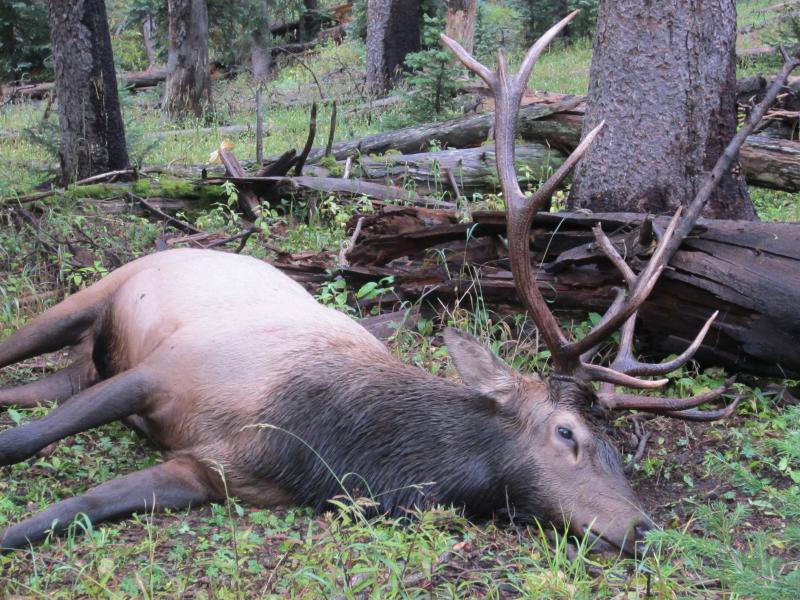
not one of my elk ,but one dropped with a muzzle loader at close range, your success depends far more on your skill and knowledge than on the rifle you selects ability to reach out past 200 yards
because different areas may require different equipment,
and if you watch most videos or out door shows,
or read most hunting magazines,
you might get the idea most elk and mule deer are usually shot at long distance in open grass lands.
While this is true in some areas,
,its certainly not true for many areas I've hunted over 5 decades, most of the guys I started hunting elk with,
advised using a 30/06, or a 7mm or 300 mag, but over 5 decades , and while its certainly true ,I watched what the guys I hunted with carried every year, and while most of us assumed we needed a rifle that could reach out to longer ranges and provide great accuracy
that having a rifle chambered in a cartridge that has the trajectory to reach out to 500 plus yards , most of us rather rapidly realized
the area we hunted rarely allowed us to even see game out past 250 yards and most game was shot ate much closer ranges.
and while having the potential too punch lethal holes in any elk, its rarely a lack of potential range thats rarely a required factor in most areas,
simply because game is not stupid and you tend to find most game in thicker cover, aspen, conifer, oak brush etc.
magnums have become much less popular among the majority , as handy carbines are much more popular.
MOST of the guys I hunt elk with have a browning BLR ,
(browning lever actions) in caliber's like 308 win, 358 win or 450 marlin,
OR a good single shot RUGER OR BROWNING or a lever action or a semi auto like a browning BAR in 270 win or 30/06 or 300 win mag,
the little secret! in experienced and skilled hands they all consistently KILL elk!

as these are very effective and popular choices. over the 5 decades we hunted in Colorado,
HAVING OR MAKING potential shot opportunity's over 250 yards have been VERY RARE !
long range rifles are not mandatory for most of the areas I've hunted over the last 40 plus years,
in either Colorado, or Wyoming, for ELK!
at least in all the areas I've hunted for the past 40 plus years,
both elk and mule deer are much more common in rolling hills covered with aspen and scrub oak, or mixed aspen and conifer.
now there's not a hunter anyplace that would not like a rifle that shot as straight and flat as a laser beam but in the real world that's not available and even the more common rifles like a 30/06, with a 180-200 grain bullet,
shoot more than flat enough to easily bag most elk.
in fact I'm the only one who regularly carries a 375 H&H or 340 wby,
HAVING 100% confidence in what you carry matters
I feel after decades of seeing the results that if your hedging your bets and want a rifle,
that can reach to the longer ranges, those two cartridges provide exceptional power and a decently flat trajectory
but in most places Ive hunted I find elk vastly prefer to stay where there's thicker conifer and aspen for cover, ideally near water sources and if you can get in close before spooking them, shots over 120 yards or so are rather rare!
sight in either of those two rifle cartridges to hit 3.5" high at 100 yards and your hitting , vitals with an upper shoulder cross hair hold on an elk out well past 250 yards thus from point blank to maybe 270 yards that hold will result in a very dead elk if your a good shot.
(its been decades since I needed to take a shot over 250 yards) simply because elk don't stand out in open pasture like they show in hunting magazine photos taken in PARKS where elk are not hunted.
areas that look like this are where I find most of the ELK
one of the most popular rifles many of the guys I hunt with prefer to carry loaded with speer 250 grain bullets

my 375 H&H carbine and 35 whelen slide action or 358 BLR get more use in stalking timber in deep canyons
its not so much what rifle or cartridge you use, as its is how well you use it!(and understand its limitations)
and among the guys I hunt with, the 358 win BLR and 35 Whelan 7600 Remington's are increasingly more popular

look at the pictures below, these are common areas you see elk and mule deer in,
not the open areas you see game in magazines, where pictures are commonly used ,
to show game ,pictures that were taken in national parks, you rarely see game in areas where you can see more than 250 yards due to brush and terrain


because I've hunted mostly where the game actually is ,in ASPEN like this where ELK bed and feed you simply won't see them out past 200 yards , due to terrain and cover
especially in thick timber and steep canyons.
I guess I had a huge advantage in that I got the opportunity to go on my first elk hunt when I was about 19- 20 years old. I learned while being mentored by 4 old geezers, who were members of the local rifle range,
guys who had been making the trip out west too hunt elk,for decades before I had been granted the privilege,
of being asked to join them and watch and learn from their experience.
I was specifically told what to buy wear,and bring and it was assumed I would take that advice as it was gleaned from decades of experience,and while I just "KNEW" I knew these old guys were not up on the newest stuff from reading all the magazine articles I also knew I wanted to fit in and be invited back so I followed the advice to the letter and for several years I worked, and I collected a legal elk on both of my first two trips using the 30/06 760 remington "loaded with 220 grain REMINGTON PETERS AMMO" that I was told was the "BEST DARN RIFLE AVAILABLE" for elk
now in every magazine you see youll find pictures of elk ,
(mostly taken in places like YELLOWSTONE PARK)
where ELK stand out in the open fields, but in areas that get hunted elk are rarely that stupid and those few that are don,t last very long.
once the first few car doors get slammed, and the first few shots get fired all the reasonably smart elk retreat to the remote side canyons and thicker brush. yes you might find a good place to intercept them as they move on a good choke point in the terrain as they vacate the easy to access areas but for the most part youll be sneaking thru aspen and oak brush and conifers, and shots over 250 yards will be rather rare, and if you can,t consistently place shots accurately under field conditions, what you carry won,t matter much!
the head stamp on the case or the caliber used is far less critical than you might think as long as the rifle is able to place shots accurately and punch holes clear thru an elk at any reasonable range.
your almost always better off using a familiar rifle you've practiced extensively with ,and one your 100% confident in, rather than trusting some rifle that your just learning to use.
I will also point out that in practiced hands a 270 win or 30/06 with premium ammo will kill any elk or deer, but the heavier calibers like the 35 whelen and 340 wby do have the potential to hit a noticeably harder and more damaging blow, thats not necessarily more lethal but it certainly seems to get an elks attention quicker in my experience.When I started hunting I carried a 760 rem in 30/06, on the advice of several experienced mentors, it worked great, but I was under the impression, that I needed a magnum caliber as the first couple elk I shot failed to instantly fall over when hit,
I upgraded to and I have mostly carried a 340 wby mark V or a sako 375 H&H carbine,

after 47 plus years of hunting I don't think I've ever seen a place, terrain, a distance,or an animal I could not have taken cleanly with a 308 win, if I could get into a good solid shooting position, with a quality rifle like an M1a ,
but there's a difference between having the ability to place a shot that will be lethal, and placing a shot that is very likely to be almost always be very rapidly lethal, I've shot several elk with a 30/06, they all dropped inside 50 yards and in under 40 seconds
I swapped to a 340 wby, similar too this

please don't misunderstand, having a rifle that potentially has extra reach is a plus...
it's just not a factor that you'll need to use very often,
in the areas I hunted for decades
http://garage.grumpysperformance.co...ou-so-dependent-on-your-weatherby-rifle.2403/

450 marlin or a 358 win cartridge chambering in a browning BLR is a good option in the thick timber I normally hunt.

this may sound a bit odd, but the 358 BLR and remington 7600 pump action, 35 whelen
are both highly respected and sought after by the group of guys I hunt with,
as they are reasonably light, accurate, powerful and have proven very effective, loaded with 225-250 grain bullets

375 H&H
one or at times two of these four make almost all my hunting trips

expecting the increased power to make much quicker kills,
it definitely tends to get a much more obvious and pronounced reaction, from game from bullet impact but in my experience its not a huge improvement in lethality, it kills a bit quicker but in both cases a single well placed hits lethal
these did not kill any better but you darn sure got a more noticeable reaction when you hit game! (they became my trusted companions for decades.)
I have had a remington 7600 in 35 whelen as a shared hunting camp back-up rifle available on many of the trips to hunt elk, and its saved the hunt for several guys over the years when for various reasons their rifle stopped functioning.
the more experience I got the less I worried about the rifle being used, simply because Ive seen everything from a 257 robert's BLR to a 458 win ruger single shot, used successfully, to kill elk.
I personally trust, and prefer to carry the .338-.375 caliber rifles , but Ive seen that anything from .257 to .458 works if the guy carrying its knows how to use what he has in his hands.
I've just seen too many elk and big mule deer killed very dead with a 257 roberts, 6.5mm swedish mauser , or 308 win, to think you need a magnum, or guys using a
444 marlin, 45/70 or 458 win to think you need the flattest trajectory available
,I go to the local ranges on a regular basis,
I usually have my 35 whelen,my 340 wby or my 375 sako,
I still use my 35 whelen 7600 pump action,occasionally, if you have a 270 win or larger caliber rifle and you select and practice shooting from field positions with premium ammo with a 130 grain or heavier projectile,you'll do fine if you know how to use it effectively .
keep in mind, being in good physical condition, knowing the games habits and anatomy and dogged, persistence, and learning how too shoot rapidly and accurately from field positions will have far far more effect on your success than any change you make in the rifle you carry.
you can have the best equipment available, but if your not willing to cross enough territory to be in the right place ate the right time, and that generally will not be in sight of camp,your hurting your odds of success.
my late hunting partner considered anyone not equipped, with a browning BLR in caliber 358 win ,
while hunting elk too be hampered and working under a sever dis-advantage
I loaded for him for almost 30 years , fed 215 primer, 250 grain speer and 44 grains of IMR 4064
that carbine accounted for at least 14 elk over 35 years.
.

theres several guys in my elk hunting club that really prefer to carry a browning BLR, my late hunting partner, RON, preferred a BLR in 358 win loaded with a 250 grain speer over 44 grains of IMR 4064 and a fed 215 primer
consistent 1"-1.2" bench rested 100 yard 3 shot groups were common.
sighted in at 3.5" high at 100 yards its almost dead on at 200 yards and about 10"-12" low at 300 yards, he used that load for over 3 decades and was very successful, most elk were 1 shot kills.
I don,t think either guy ever had in the last 35-40 years a single shot taken exceeding 200 yards
https://www.speer-ammo.com/products/bullets/rifle-bullets/hot-cor-rifle-bullet/2453
http://www.handloads.com/loaddata/d...;type=rifle&Order=Powder&Source=

one other guy FRANK, prefers the 308 win BLR loaded with a speer 200 grain bullet over 45 grains of WW760 was his preferred load.
to me a firearm is just a tool,
and I try to select the best tool for the particular conditions, of,
terrain, game hunted, max range,
basically the potential limitations of the job at hand.
yes I have several favorites,
and I've tried dozens in the selection process over 50 plus years of hunting in several states
generally one of the rifles below get grabbed on the way out the door,
simply because they work flawlessly
a synthetic stock 340 wby mark v,
a sako, synthetic stainless, 375 H&H,
and two browning blrs ,one in 358 win and one in 450 marlin
and a browning 78 single shot in 300 wby
and a bar in 270 win.
and a remington 7600 in 35 whelen,
what you use is less important than your skill & experience ,
using it,
and YOUR understanding of the limitations in its use.
buy a rifle you like, practice a great deal, and learn to shoot well off hand and from a rest,
until you can rapidly and rather consistently hit a 3"-4" orange dot at 100 yards off hand,
and a 2" dot with a rest and you'll consistently kill game.
https://www.speer-ammo.com/products/bullets/rifle-bullets/hot-cor-rifle-bullet/2211
http://garage.grumpysperformance.co...le-to-accurately-shoot-up-or-down-hill.15229/
http://www.handloads.com/loaddata/d...;type=rifle&Order=Powder&Source=

he constantly referred to my 340 wby as a "damn CANNON"
we were both successful.
Many of the guys that are not lever action fans, buy bolt or pump actions in caliber 35 whelen, the 35 whelen adds about 200 fps to the same bullets the 358 win shoots,
( I doubt any elk or deer knows the difference)several of the guys I hunt elk with think the 7600 35 whelen, is a top choice,
I've used one and I don,t see a damn thing thats in need of improvement if you hunt the ticker timber areas.

yes, I have a 7600 35 whelen, that I purchased as a camp back-up gun,
a rifle thats been in constant use , when guys in elk camp,
have issues like fogged scopes and loose mounts, and don,t bring a back-up
and that rifles use has resulted in 4 people purchasing a similar rifle after using it...
.Im sure it would be even more if the 35 whelen/7600 pump guns were currently easy to find now ,
as they seem to have been discontinued
btw \54 grains of ww748 under a speer 250 grain, is lethal on elk
http://www.handloads.com/loaddata/default.asp?Caliber=35 Whelen&Weight=All&type=Rifle&Source=
http://www.handloads.com/loaddata/default.asp?Caliber=358%20Winchester&Weight=All&type=rifle&Order=Powder&Source=

and 450 marlin rifles along, sometimes my 375 H&H carbine,

Ive used a 340 wby and 375 H&H on most ELK HUNTS

http://www.midsouthshooterssupply.com/i ... stic_Black
http://www.shootingtimes.com/ammo/ammunition_st_exforelk_200908/
http://garage.grumpysperformance.co...hat-are-you-looking-for-in-an-elk-rifle.2368/
years ago I saw a game department survey made where they asked hundreds of hunters at a western BLM check point, to look out at 5 different colored flags placed at random but carefully measured distances and write down what each person estimated the distance too be from the check point, they were handed a pen and a survey card, they were told NONE of the colored flags were at an even 100 yard multiple but that was the only info , each flag was a different, color, placed in a
different direction and at a different distance.
the survey taker pointed out each colored flag and asked them to write down their estimated range!
they tabulated the actual hunters field estimates being made on the spot, vs the carefully measure actual distances.
.
.
the results were about what Id have expected..after decades of listening to guys claim they killed deer & elk at 400 and 500 and 600 yards.......
the vast majority were very VERY bad at estimating distances correctly past about 150 yards, some estimates that were over 70% wrong were not uncommon




much of the area looks similar to these pictures I found posted elsewhere



use of a cartridge holder so you have easy access to spare cartridges if you need them,is frequently a good idea
375 H&H, loaded with 80 grains of WW760 under a 270 grain hornady and a 215 federal primer has worked in my sako carbine for decades
I find the obsession with owning an extremely accurate rifle rather amusing ,mostly because Ive "been there" and used to be similarly obsessed until experience showed me that about 90% of the problem involved was not shooting and hitting game once it was located, but in locating the game and getting into a semi reasonable range and having the opportunity to make a shot at the vitals of at least a slowly walking or preferably stationary target.
Now I'm not opposed to taking a shot at a slowly walking elk or deer if the conditions make me reasonably sure I can accurately place the shot, but where Ive hunted for decades trees, brush and terrain tend to limit your options and ranges.
yeah! making the shots far down the list of issues , finding the game and getting into position to make the shots usually a far more difficult proposition than squeezing off an accurate shot once your into position.
sometimes, I use my 375H&H, sometimes my 340 wby mag, and Ive used a 358 win BLR, 35 whelen,a 338 win, 45/70 MARLIN,and 450 marlin BLR but IM constantly being told at local ranges that my choices in rifles for hunting ELK are all wrong by the younger guys, with their 270-7mm-300 mags , now I generally smile and ask how many ELK they have killed, what the areas they hunt looked like, how far the ELK went after they were hit, etc.
about 90% of the time those young guys either have their first hunt coming up, or they might have 1-2 ELK to their credit.
there's certainly nothing wrong with selecting a 30/06,7mm rem mag or one of the 300 mags, but its also not nearly mandatory like some magazine articles seem to suggest.
now Ive hunted ELK for over 40 years , in several states and have only killed a bit over 3 dozen ELK personally,(some years I lucked out and got two(different states) but Ive seen well over 100 elk killed from guys in our group., Ive dressed out many if not most of those ELK. and if Ive learned something, its that its not the caliber of the rifle used so much as the guy behind the rifle that matters in the end result.
in 40 years of hunting ELK I can remember only a very few that were taken by ANYONE in camp that were shot at over 250-275 yards.
my 35 whelen and 340wby have both killed well over a dozen elk each with a single shot, with never a problem. SO Ive GOT SOME idea WHAT WORKS.
AND THE FACT IS THAT IN THE STEEP CANYON COUNTRY IVE USUALLY HUNTED EVEN SEEING AN elk PAST 200 YARDS IS RARE!
when I started hunting ELK , I was 19 years old ,most of my mentors were old geezers were much older ,in their 40s-60s, and most carried Remington 760 30/06 rifles with receiver peep sights and loaded with 220 grain peters ammo, it work well...and it was what I was advised to buy, I tried a great many other things over the next 4 decades, but have to admit that original equipment choice would still work well on 90% of the elk Ive seen in the last 45 years, simply because its fast to use has the required range and power and its easy to carry.
not everyone waits to the week before the season opens to verify the rifle they use is sighted in.
while I firmly support sighting in your deer rifle and going to the local range a few times before the season to verify the rifles still shooting to the point your aiming.
I have used a browning blr in caliber 358 win and the same ammo formula for decades. as has one of my close hunting companions.
(250 speer over 44 grains of IMR 4064 and a 215 fed primer)
I sighted it in 3.5" high at 100 yards, so its dead on at 200 yards and 10" low at 300 yards 30 plus years ago, and I check it several times a year and its never changed, its point of impact.
and yes its very effective on both deer and elk.
my late hunting partner used a similar combo as his primary elk rifle for 30 plus years and always laughed at me for carrying my 340 wby, because In 30 plus years, I doubt either of us shot deer or elk at over 250 yards on any hunt, because we never saw one past that range!
ID be perfectly equipped with my 450 marlin BLR or 340wby or 35 whelen, the rifles caliber is just not as important as the skill used in getting into the herd and selecting the shots, and the ability to locate the herd.Ive even used a 45/70 with hot cast loads on a couple,
if pressed Im sure I could kill ELK with a 44 mag carbine, ELK are just not that hard to kill once you get into a decent angle and range, its GETTING INTO THE POSITION THATS HARD.
find something you shoot well, something fast and accurate out to 300 yards with enough power to kill effectively and you'll do fine, its been a darn rare hunt where shots over 250 yards were even considered, and that's not due to lack of long range skill with a rifle, it due to the fact ELK are not STUPID and rarely stand out in the open! Id also suggest you select at least a 270 win as the minimum caliber and power range for ELK , you can kill elk with a smaller caliber but its generally more difficult in my experience to drop one on bullet impact without some decent bullet weight and deep penetration, and bigger heavier bullets do provide some advantages, and youll seldom get ideal angles or conditions where you can take a good deal of time to set up a shot.
killing an elk is not the same as having one drop on bullet impact, and its critical shot placement , lots of practice with your rifle,and a reasonable power level that consistently does that.

this is NOT a bull I shot,its simply a picture I found posted, but it gives you a good idea of the typical area you still hunt, so you get some idea why I say a long range rifles not mandatory and why one of my hunting partners used a 358 win BLR for 25 years and thought it was the ideal elk rifle, almost any rifle that hits hard out to 300 yards will do fine in my experience.
THESE THREE PICTURES BELOW SHOW WHAT WOULD BE IN MANY CASES EXTREMELY OPEN AREAS COMPARED TO WHERE YOU GENERALLY FIND ELK, ONCE THE SHOOTING HAS STARTED













ELK ARE NOT STUPID, as soon as they detect hunters they move to the least accessible areas with the thickest cover , and that usually means youll spend a great deal more time slowly and carefully sneaking thru timber than shooting across open fields like those magazine article pictures taken of elk in parks like yellow-stone suggest.



these are rather typical pictures of ELK hunting terrain in my experience
this picture above would be an example of a rather rare exceptionally open area , SIMILAR TOO where I hunt, where you might get a 300 yard shot, but elk are not stupid they tend to avoid crossing most areas like this
“ Spot and stalk and still hunting are quite different.â€
“Spot and stalk frequently morphs into a still-hunt “
Both true but you can,t effectively hunt elk unless you at least know which drainage or canyon currently holds one of the elk herds or groups as the elk tend to move in groups thru several canyons, and in my experience youll rarely see all or even most of the elk so getting in close thru several sets of screening guard cows constantly watching the area to get to a location where you can get a good shot at a legal bull on public land is a challenge.
Now I see all the TV movies and videos, where there’s 50-70 elk streaming thru narrow open meadows and some hunter and guide sitting on a ridge 400 yards out has his pick , probably filmed on private ranches where there’s minimal hunting pressure, or near Yellowstone , but in my 42 plus years of hunting elk that’s just not happening on public land.
What I commonly see is much smaller groups, briefly glimpsed thru binoculars walking into aspen or conifer stands, once spotted the hunter must calculate a route keeping him down wind and in cover and a route that allows him to arrive in a reasonable time frame, and knowing that there a high probability the elk won,t be at that exact location when he gets there.
I was at the range a while back sighting in my 450 marlin BLR and 375 H&H carbine
with the loads I found to be exceptionally accurate ( for the 450 marlin, 50 grains of IMR 3031 and rem , fed 215 primers,405 bullets)( 77 grains of WW760 and a 270 grain hornady for the 375 H&H carbine)for a future elk hunt when one of the guys next to me started up a conversation concerning elk rifles, scopes and caliber selection, now Ive been on easily 34-35 elk hunts in Colorado alone and several in Wyoming and one thing I seldom see discussed is the ability to get in close or the potential difficulty in placing a shot on rapidly moving elk at shorter ranges in the lodge-pole pine and aspen.
everyone seems to be concerned with having a 500 yard plus capability but seldom is the need for nearly hunting like jumping elk like white tails or grouse discussed and Ive shot most of my elk at short ranges after they started leaving the area, rather than at picture post card long range while they just stood around.
and a rifle like my BLR with its 4x scope or my 35 whelen slide action with its 2.5x makes that far easier than the 4x12x scopes on those 300 mags I see frequently promoted as the ideal elk rifles.
If youve ever jumped elk at close range you might be familiar with the rush of adrenalin, the noise and the difficulty of placing a shot on a fast departing elk anatomy while its retreating thru scattered aspen or lodge pole pine and I can tell you that more than once Ive shot elk and seen small trees or branches beyond the elk or on occasion in front of elk get impacted by a bullet.
the magazines make elk hunting always seem to be a long range affair, but thats not always the case and shots at elk ,many shots were taken while elk were staring at me, while they tried to determine if I was a threat, or busting thru timber in a hasty retreat to some remote canyon from under 100 yards in timber have been far more common in my experience
to those guys that are insistent on having a 500 plus yard ranging ability on their elk rifle, I fully understand the compulsion almost the obsession as I purchased my weatherby fibermark 340 WBY MAG rifle with that in mind, ITS PROVEN TO BE AN EXCELLENT CHOICE,
but over the last 42 years of hunting elk I don't think Id have even noticed if all my bullets worked perfectly out to 350 yards and if at 351 yards they turned into a puff of cigarette smoke.
my late hunting buddy carried a 358 win BLR for 3 plus decades and never had the least urge to change, he was very successful, and constantly joked about my need to drag a 340wby cannon hunting,I found that at least in the canyon country we hunted for decades he was correct! and while I used to use my wby almost exclusively, I now use a 375 H&H carbine and 35 whelen just as often and recently purchased a 450 BLR and see no reason it won't also work under the conditions and in areas I hunt, yeah! I know that nagging fear that the trophy of a lifetime will be standing out at 550 yards, and youll be holding what you think is a 300 yard range limited rifle, well after 35-40 years its just never happened so in the limited years I have left to hunt I bet it won,t either, and if it does I wish the elk well, we may just meet a different time and place
besides I enjoy getting in close , using tactics and topography to my advantage and don't feel that sniping a trophy is really going to be that satisfying
http://garage.grumpysperformance.co...for-a-decent-hunting-rifle-for-deer-elk.1133/
bits of wisdom, related to rifle and caliber, and rifle choice, gained over 5 plus decades
back in the later 1960s I was introduced by a group of "old geezers"(at least in my eyes, at the time, ) to big game hunting, and I was mentored in the skills and requirements of out of state hunting. (most years several of us made 1-2 week long hunting trips to hunt elk and mule deer) for the...
garage.grumpysperformance.com

not one of my elk ,but one dropped with a muzzle loader at close range, your success depends far more on your skill and knowledge than on the rifle you selects ability to reach out past 200 yards
Last edited by a moderator:




